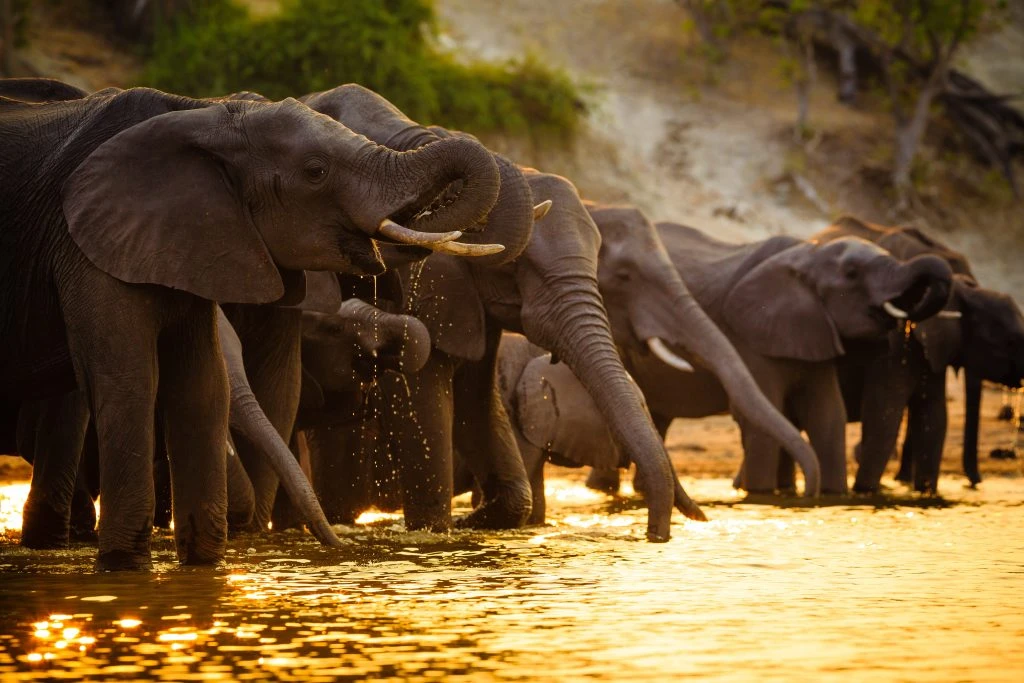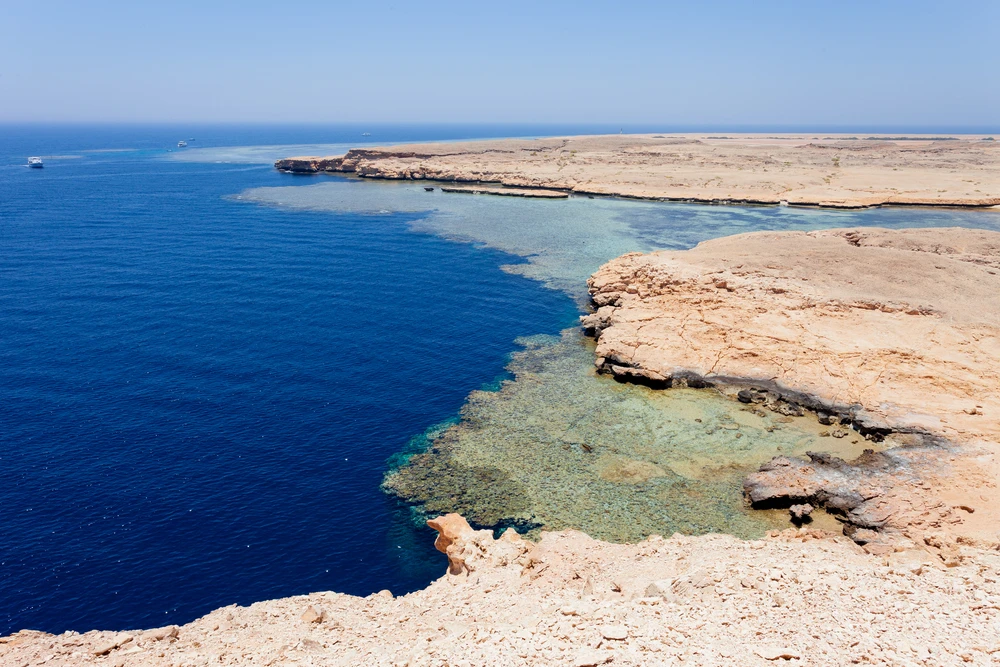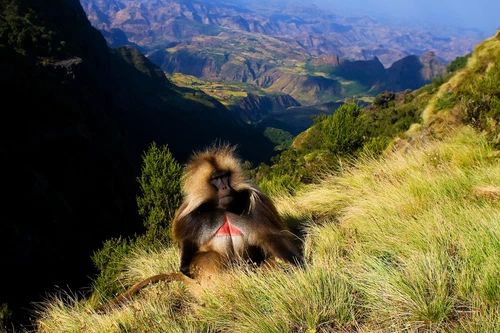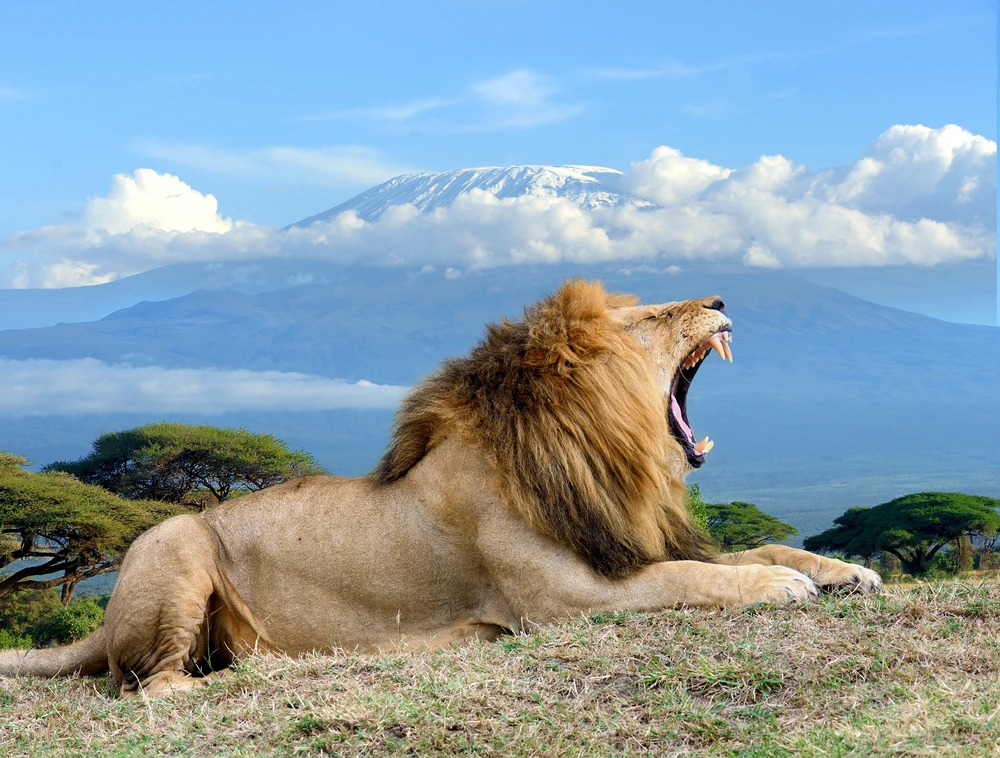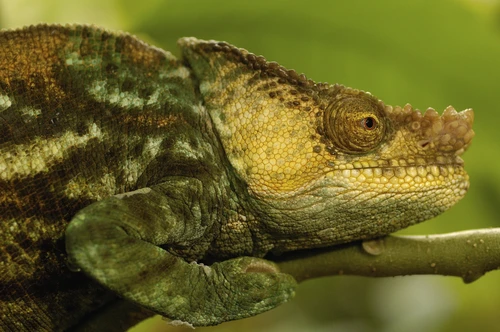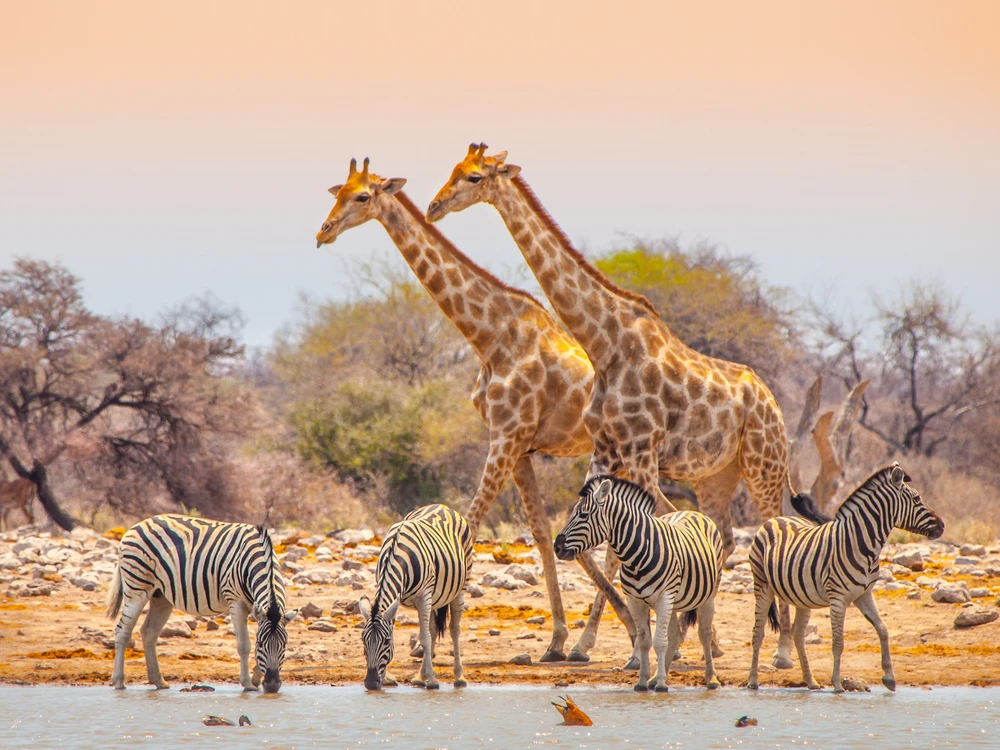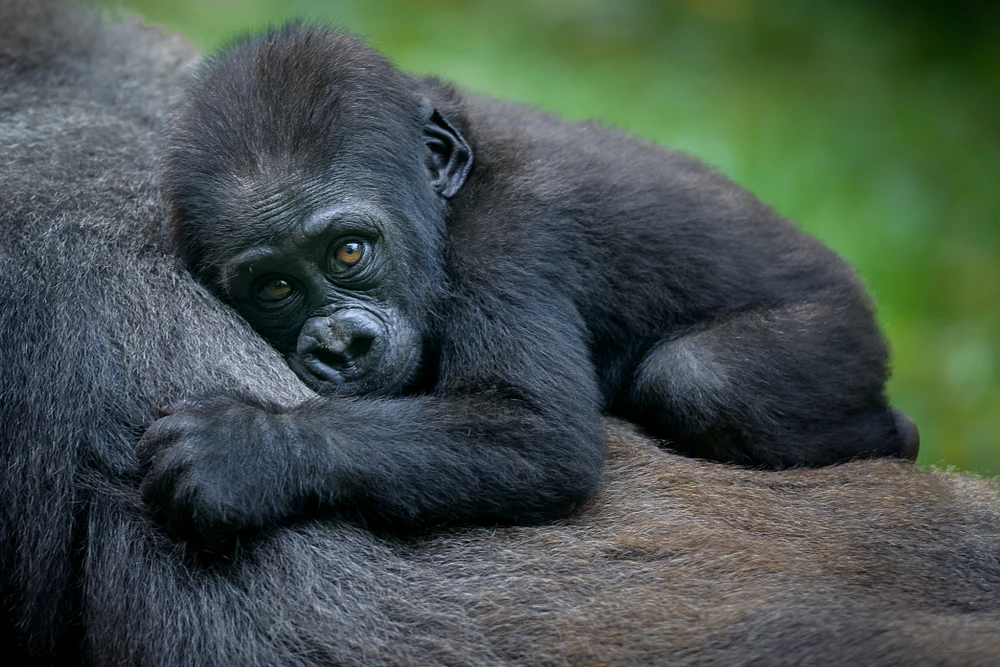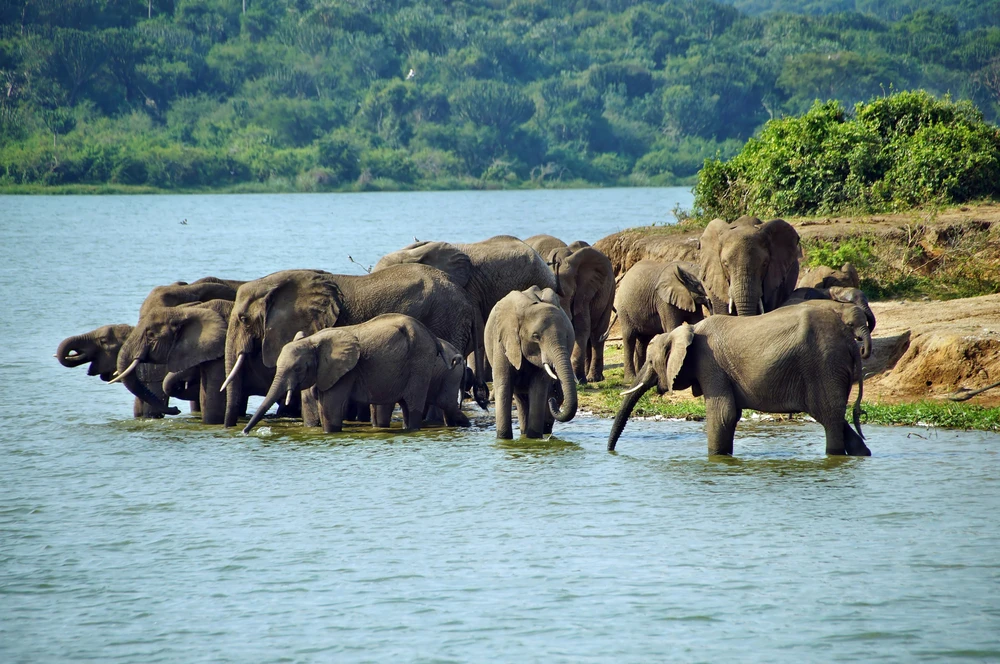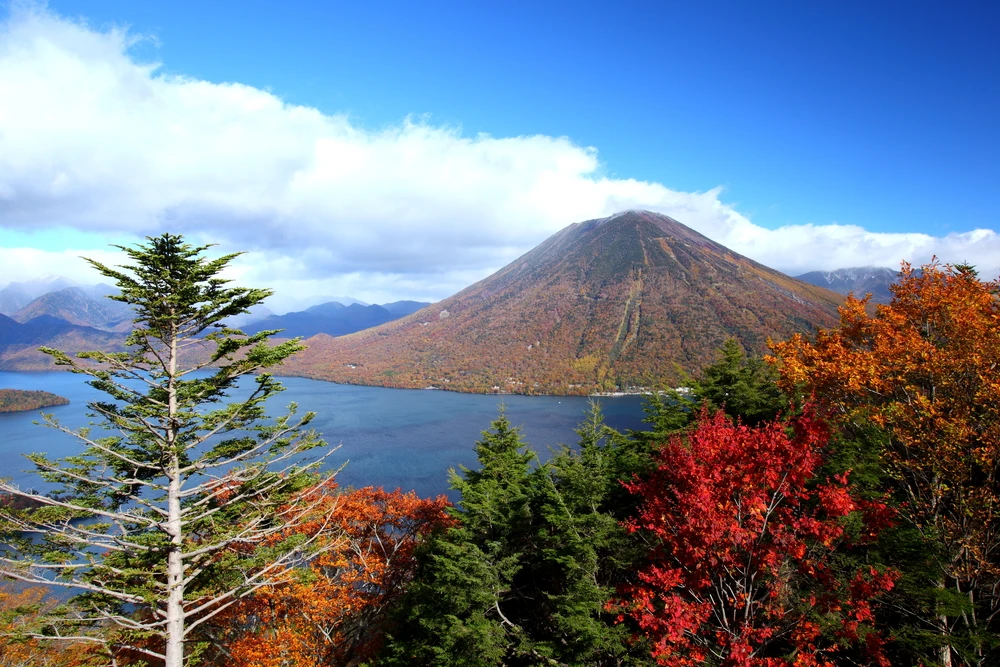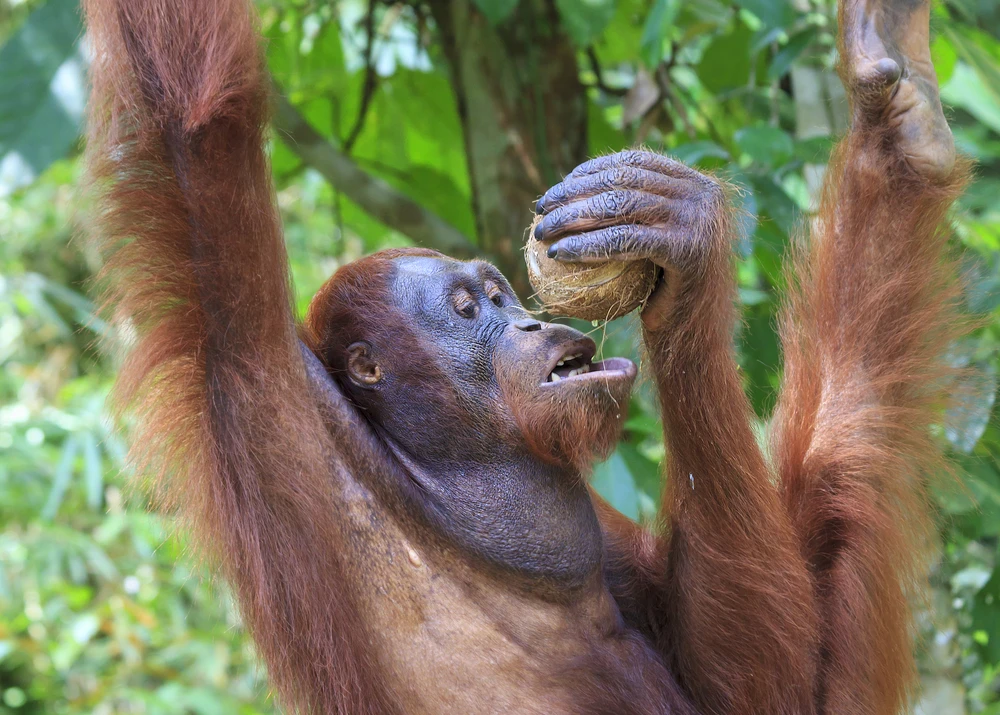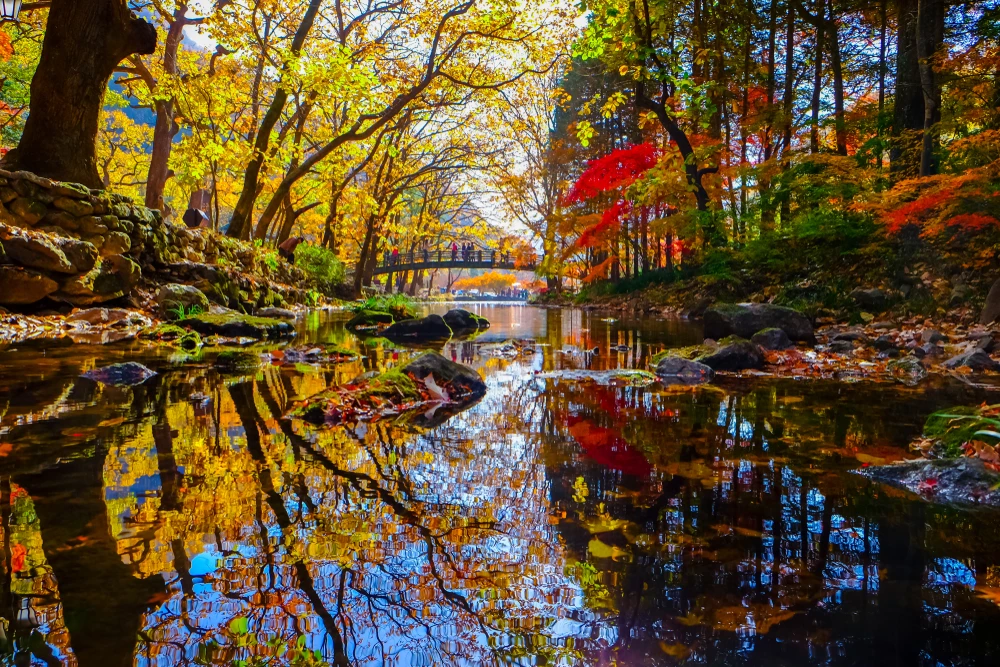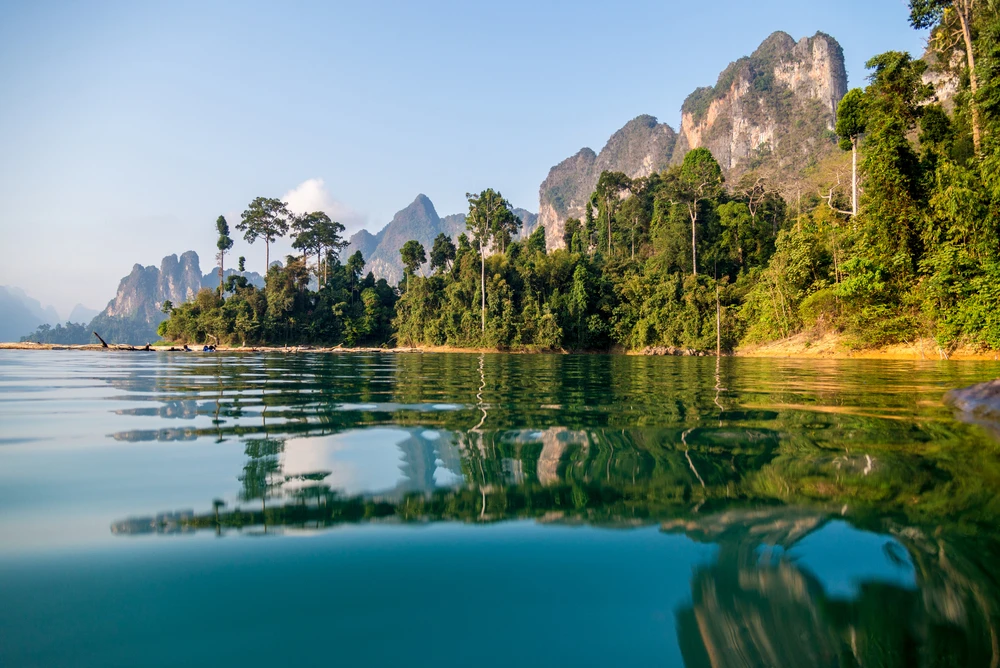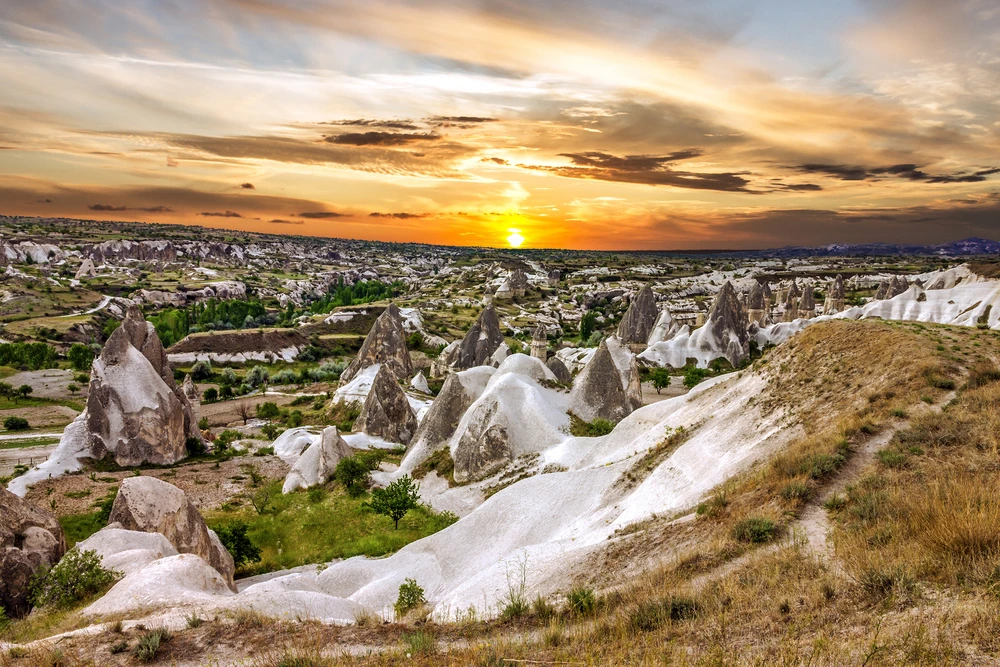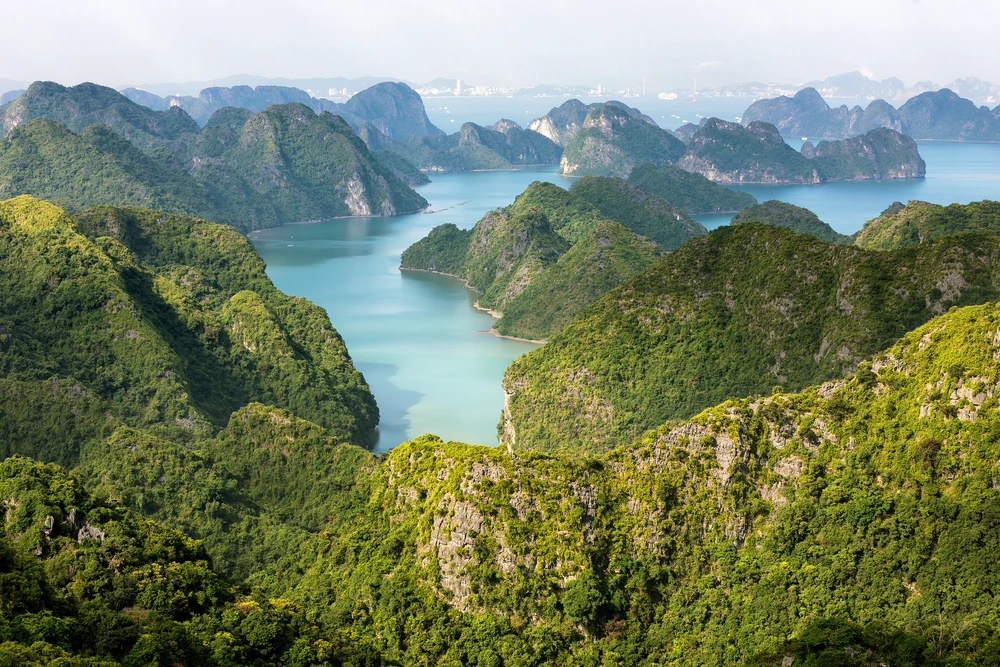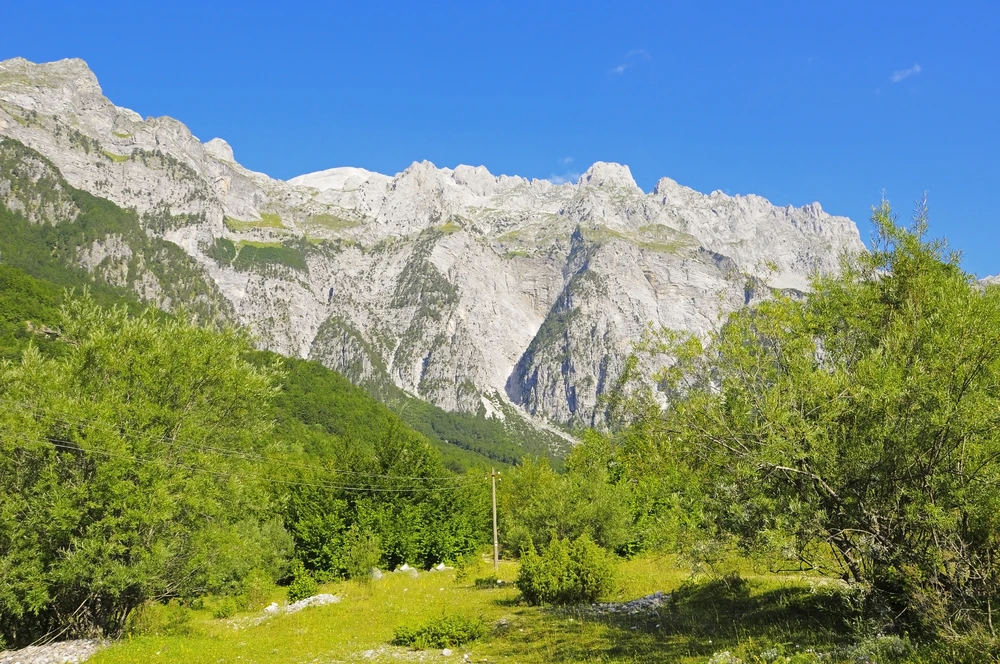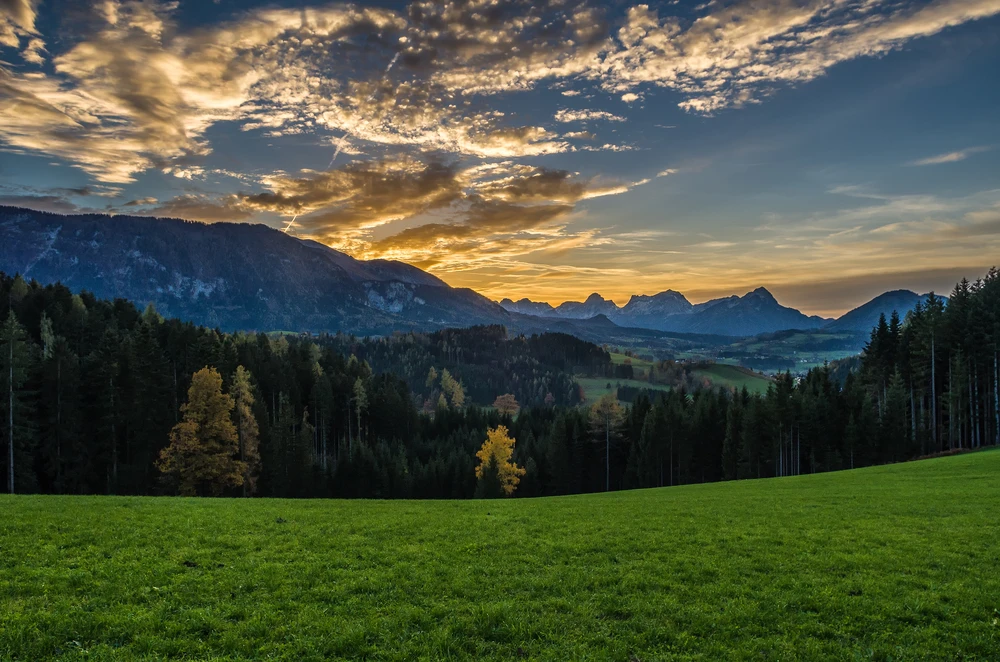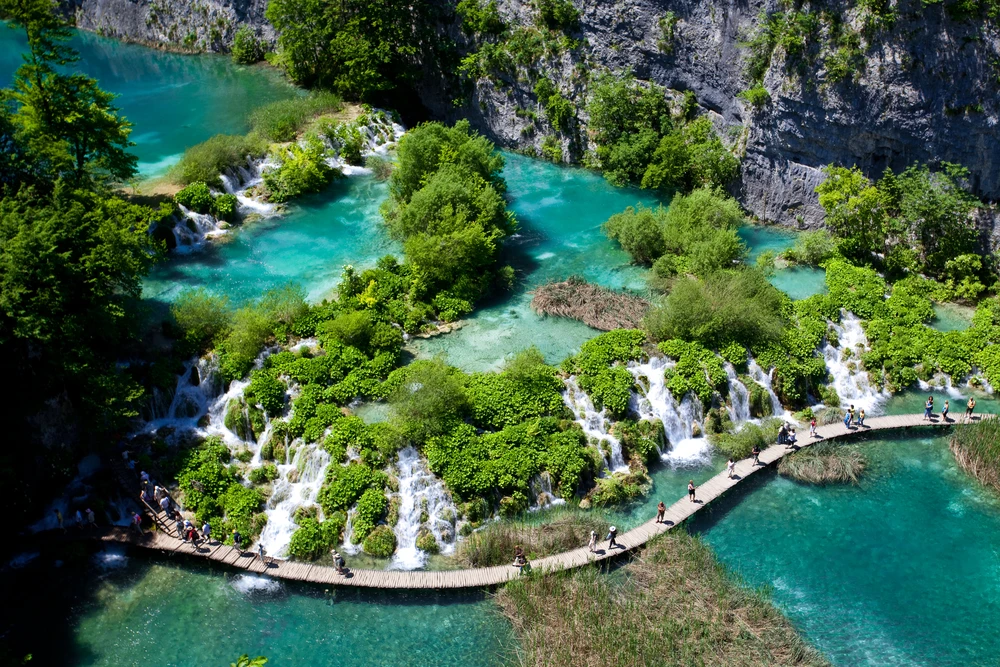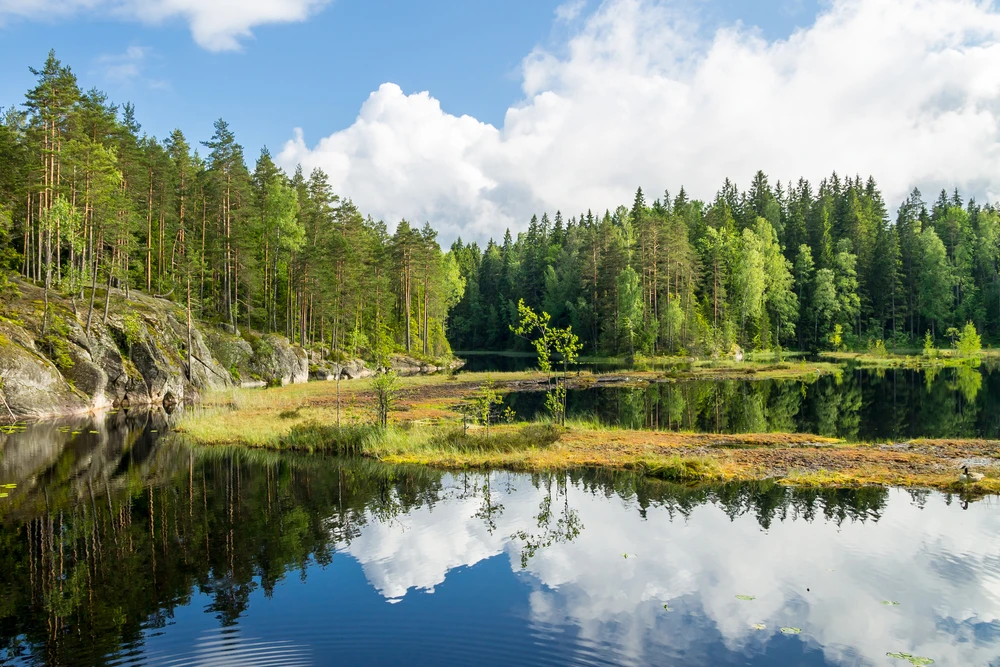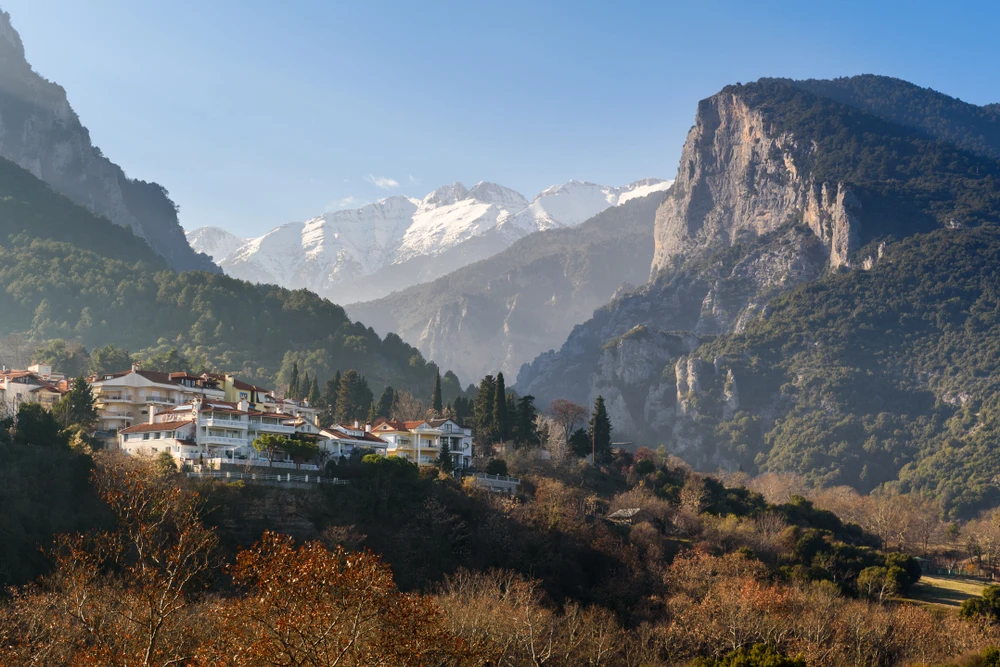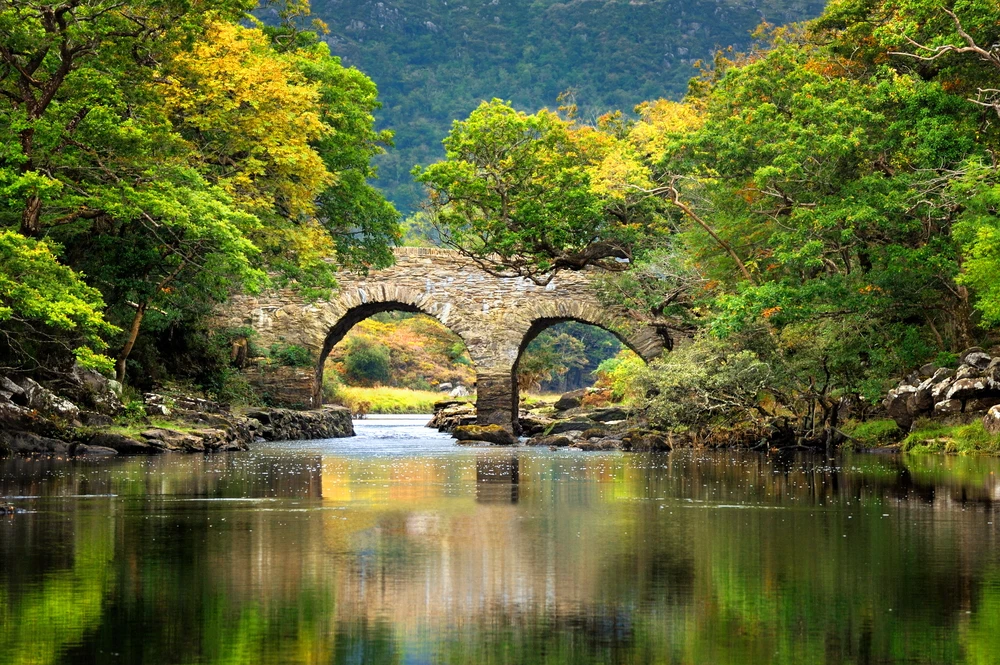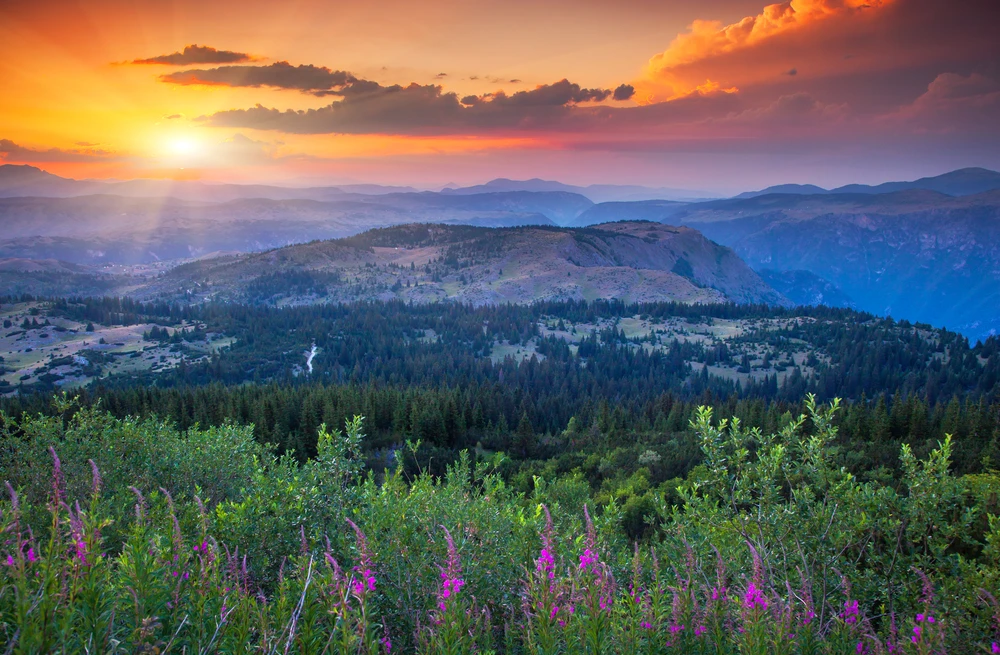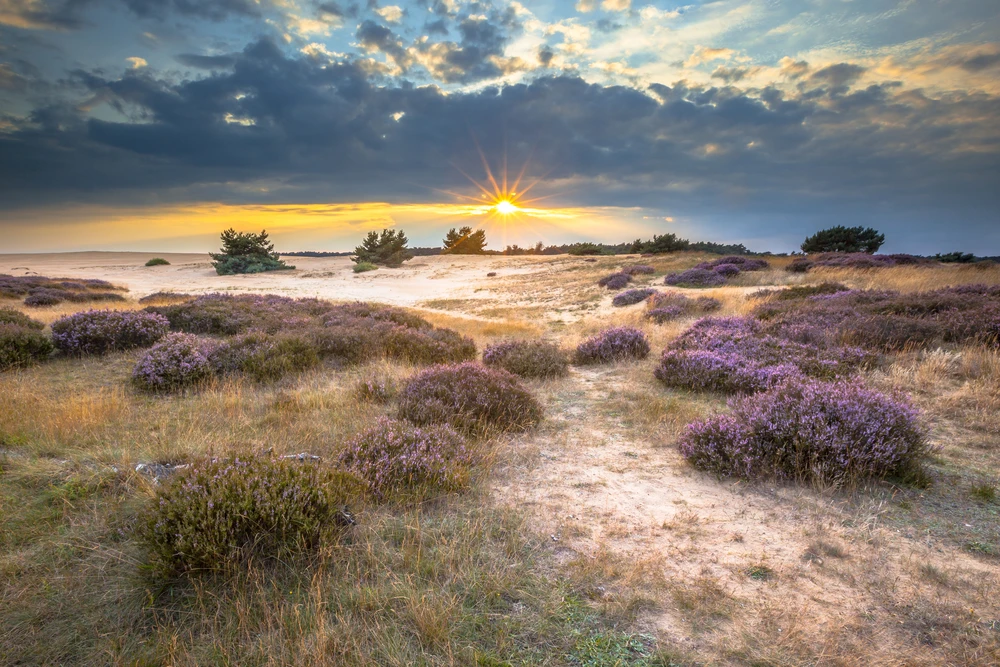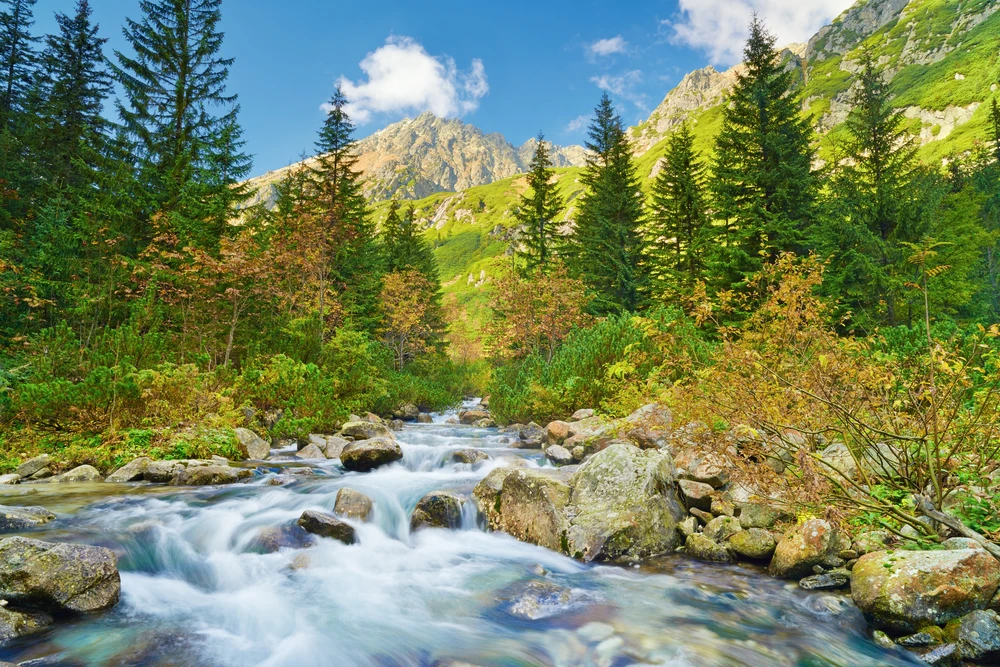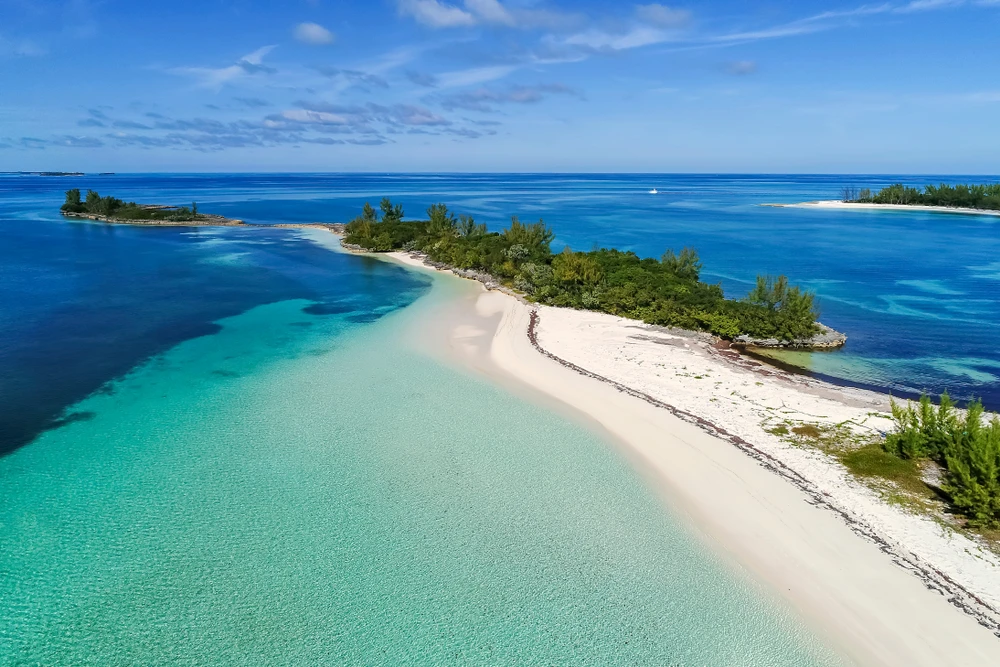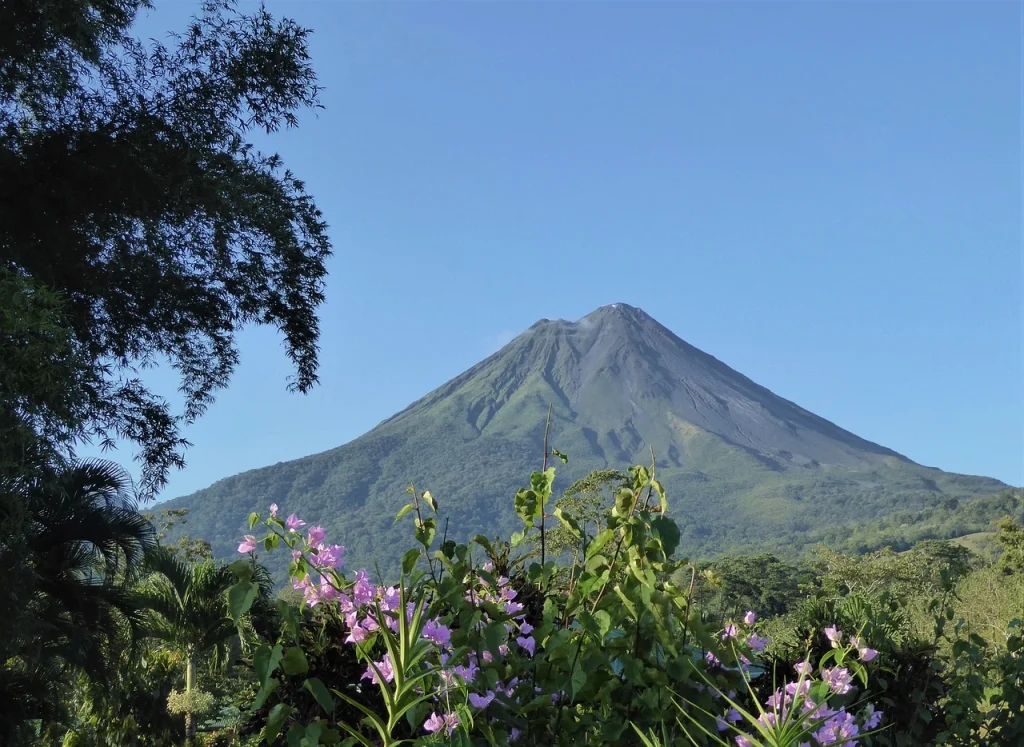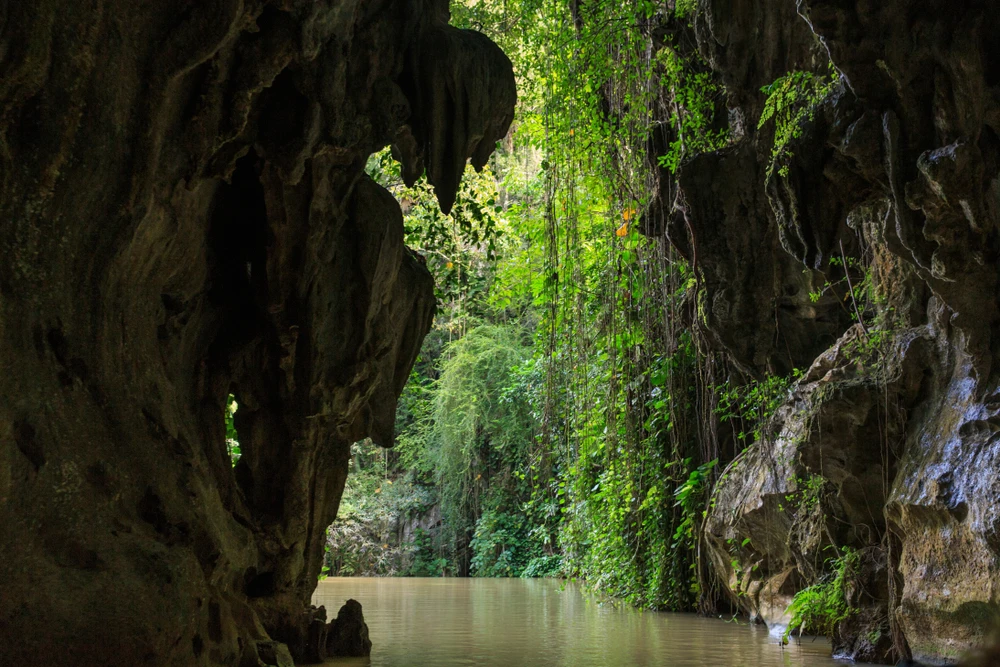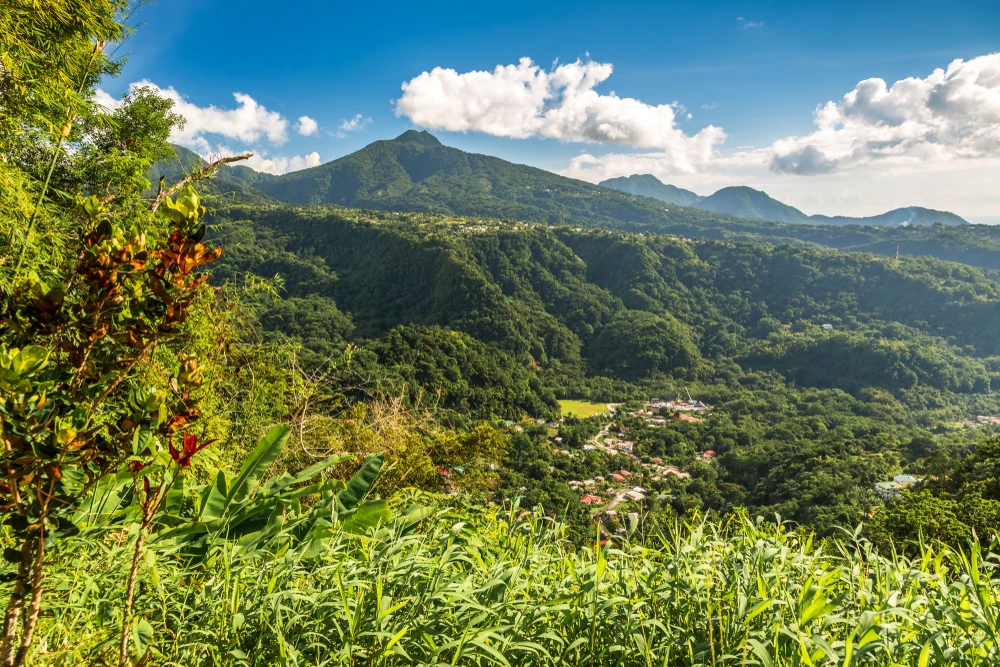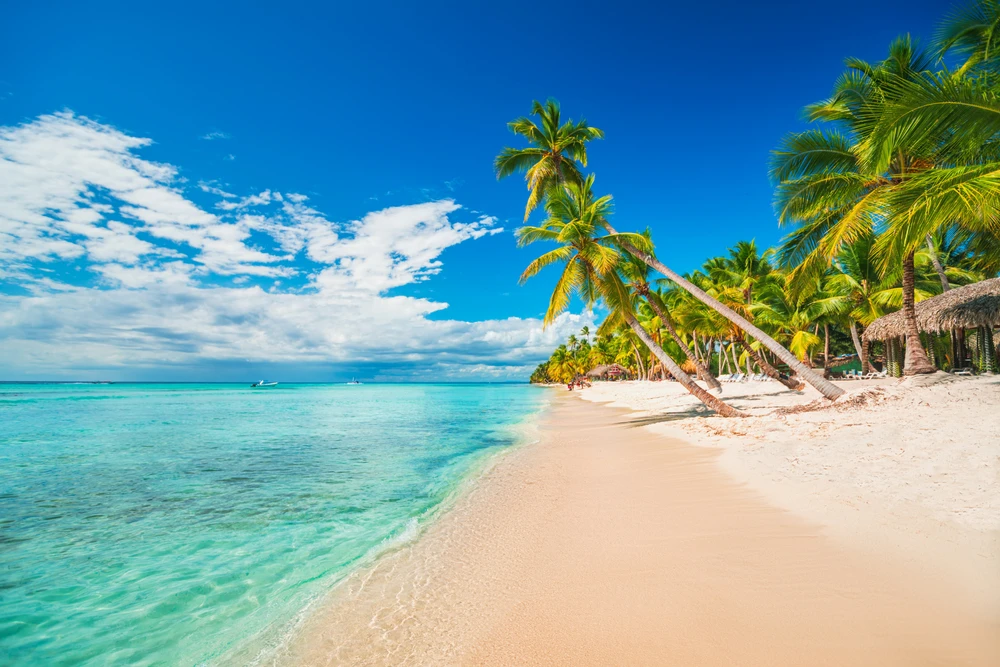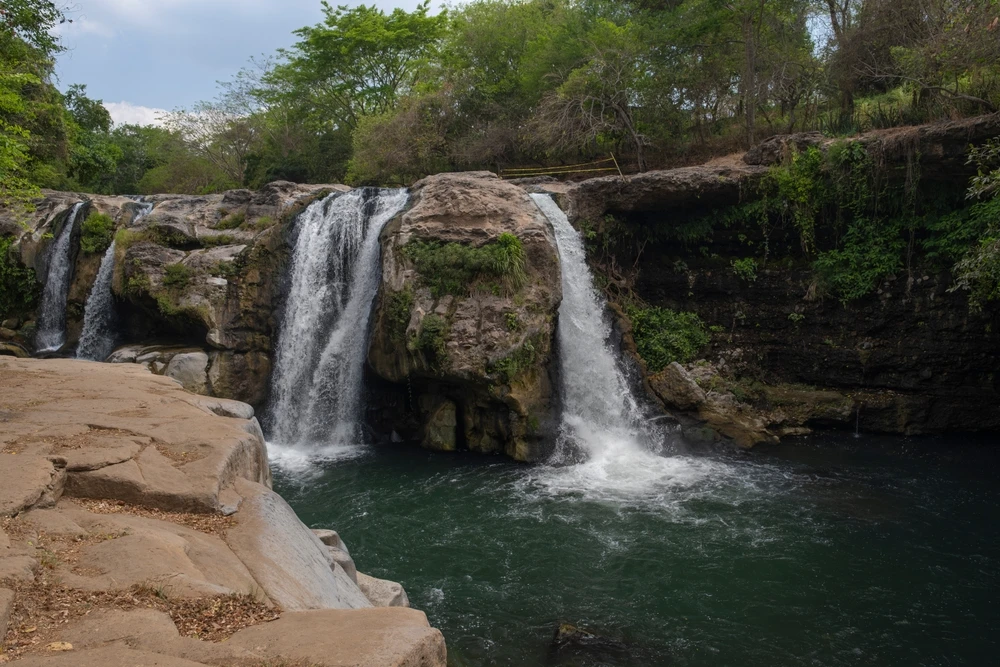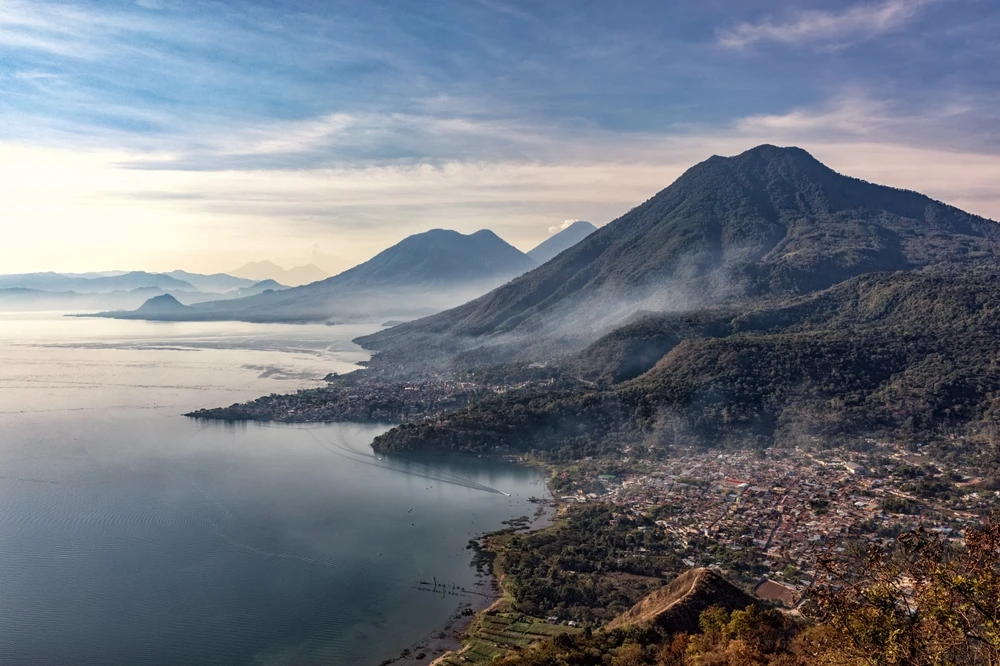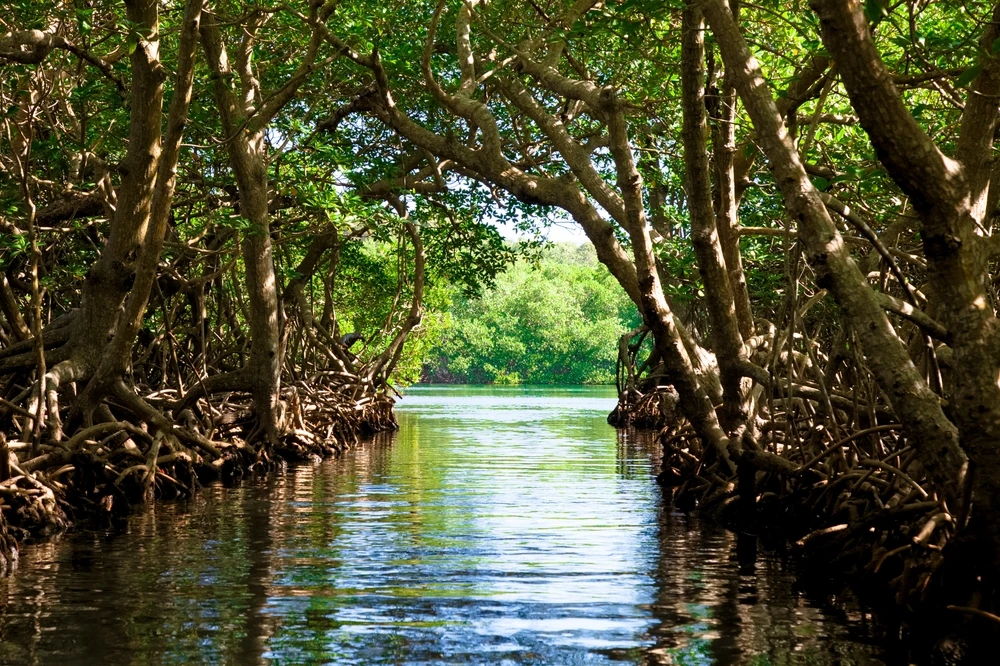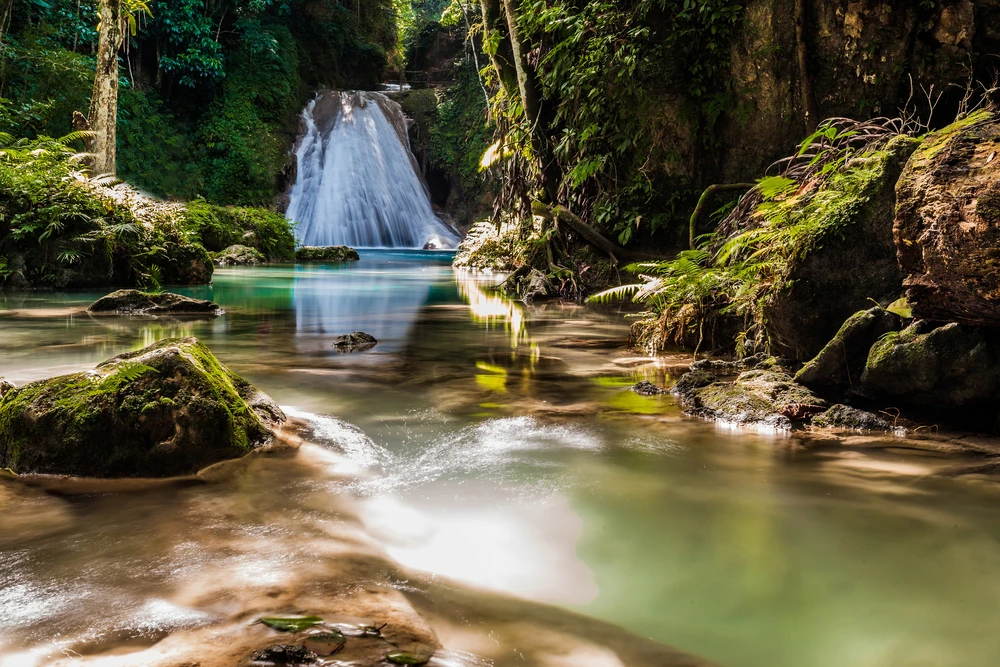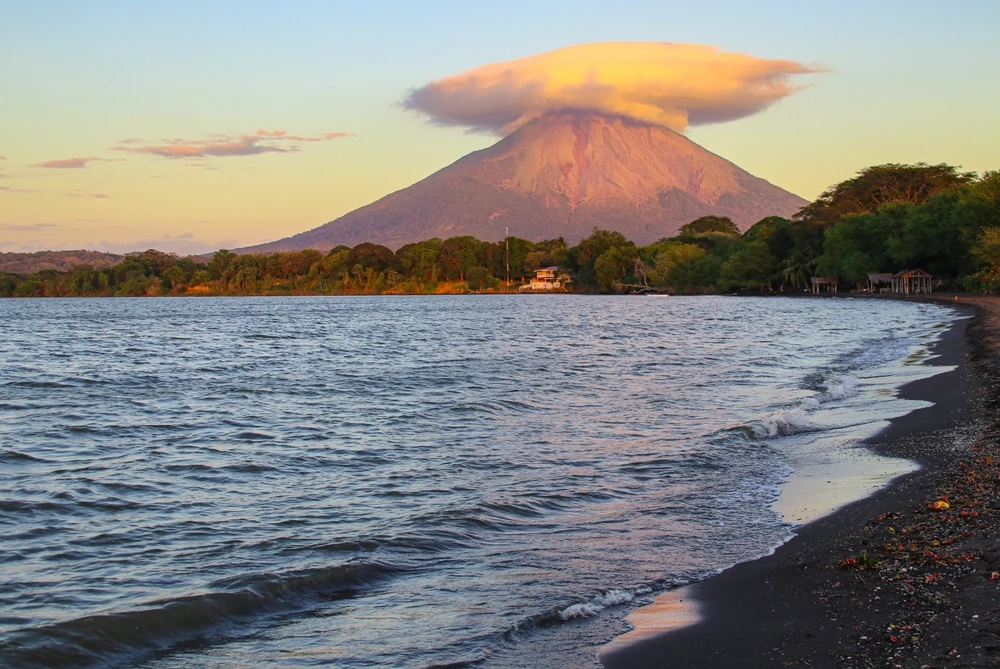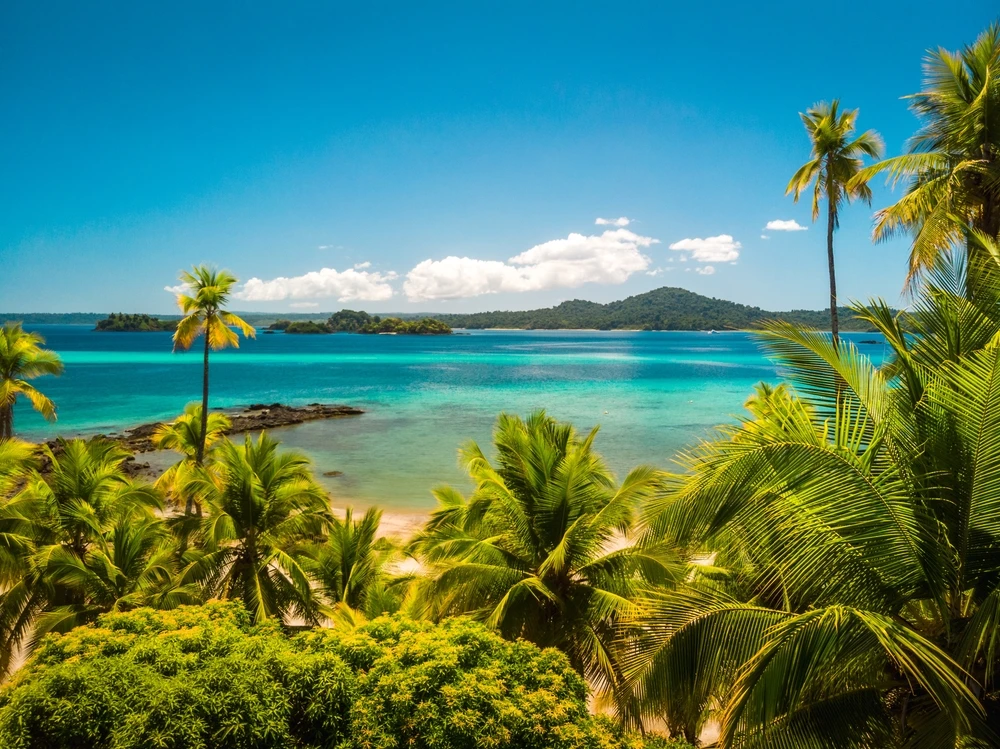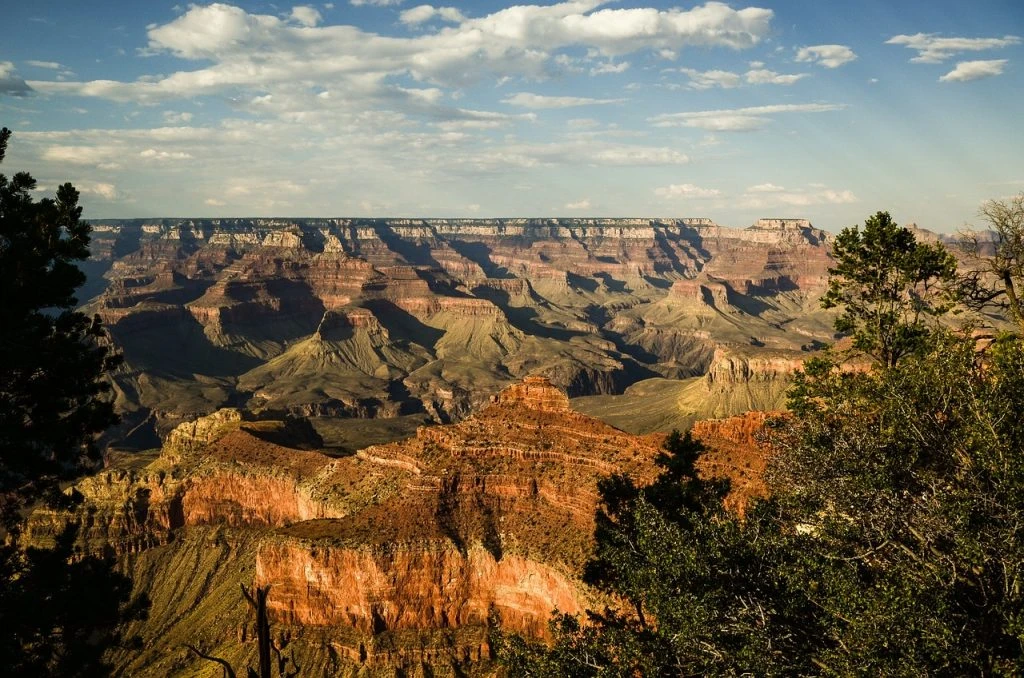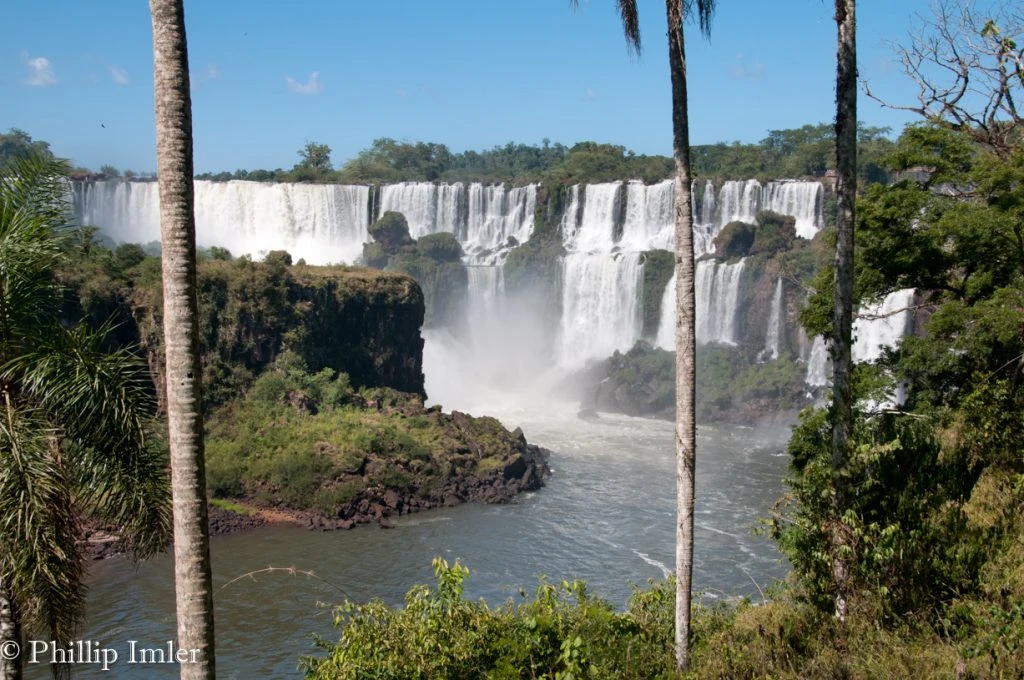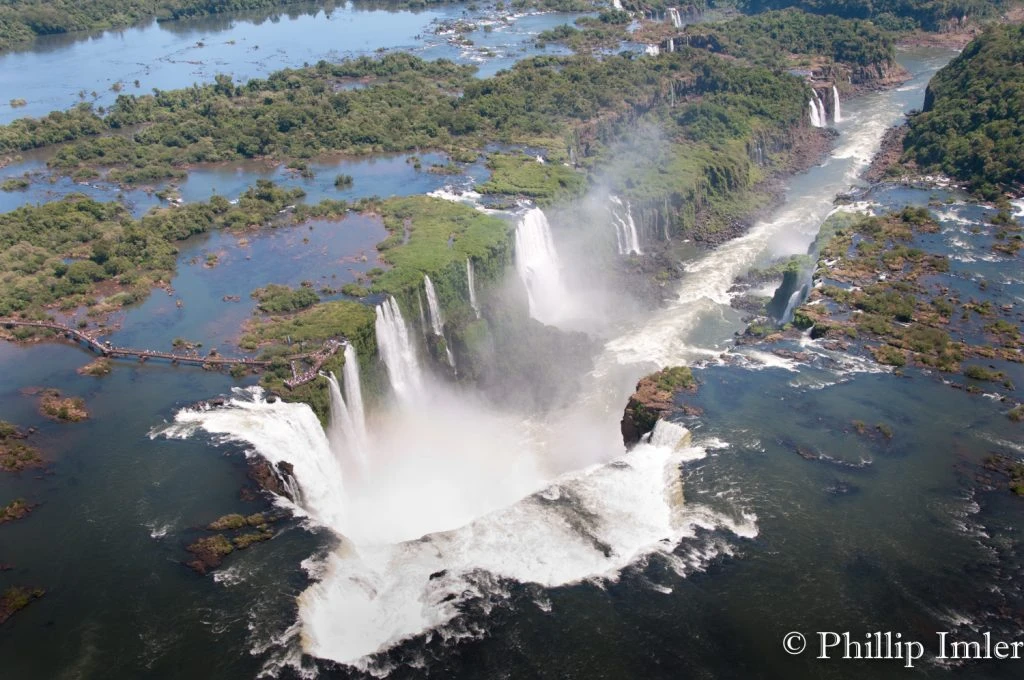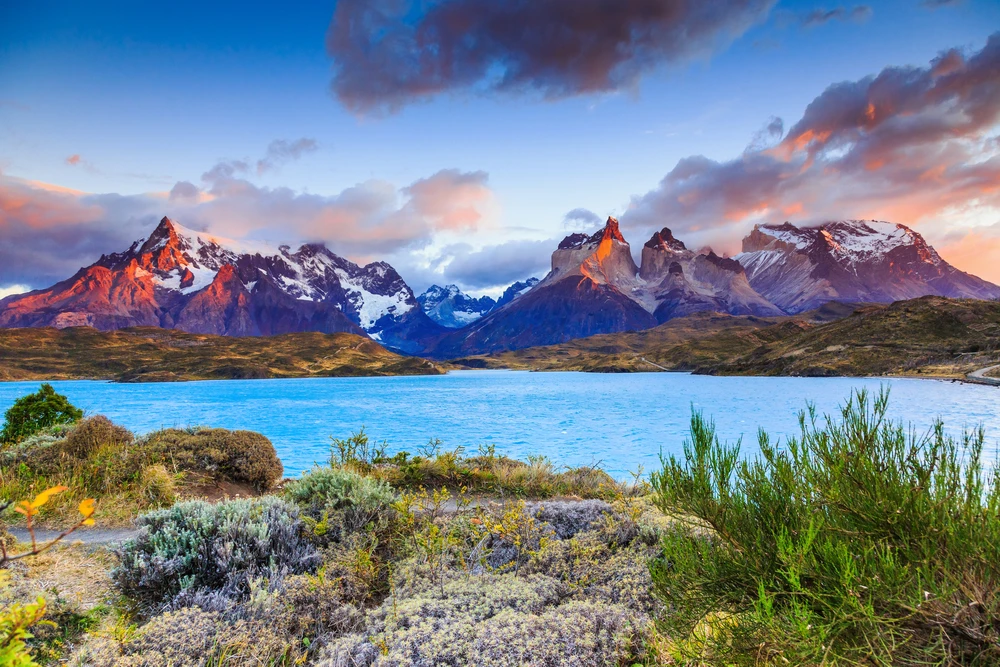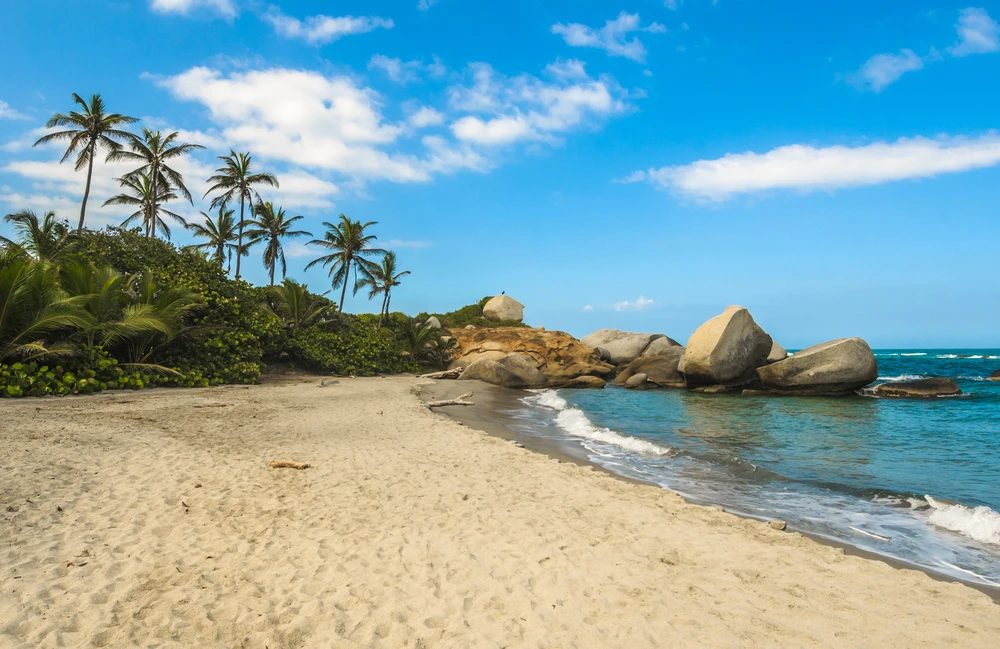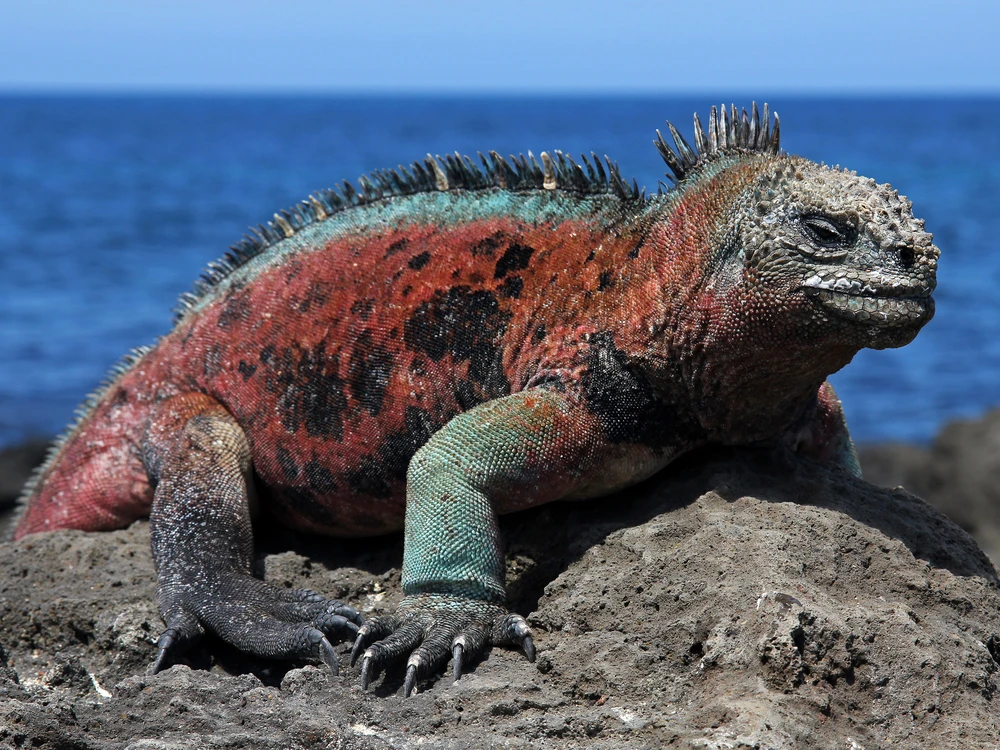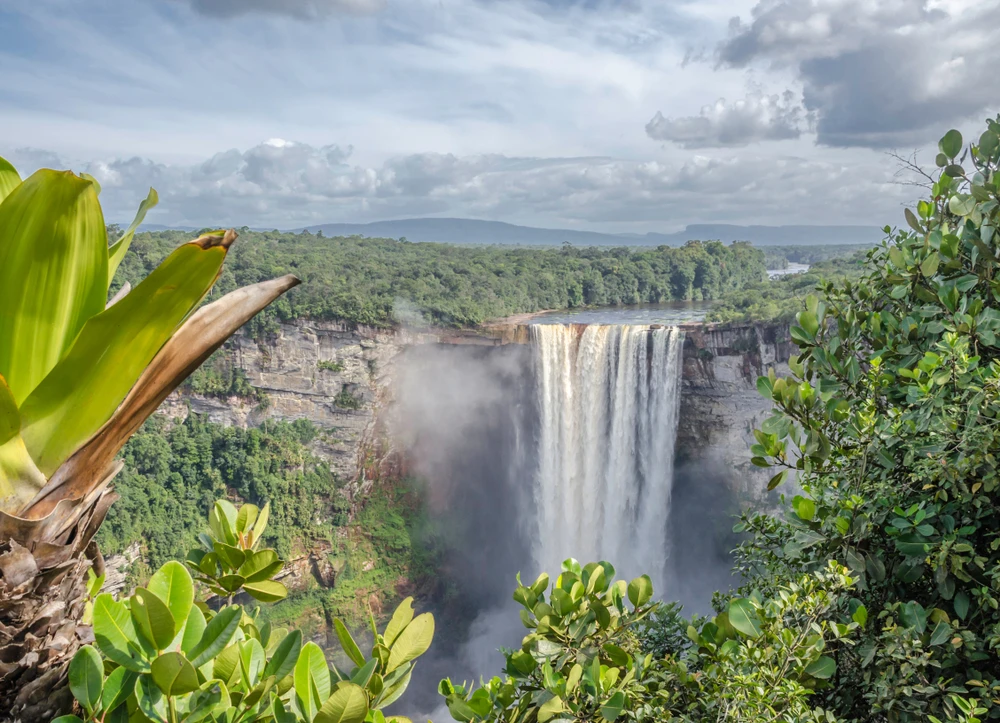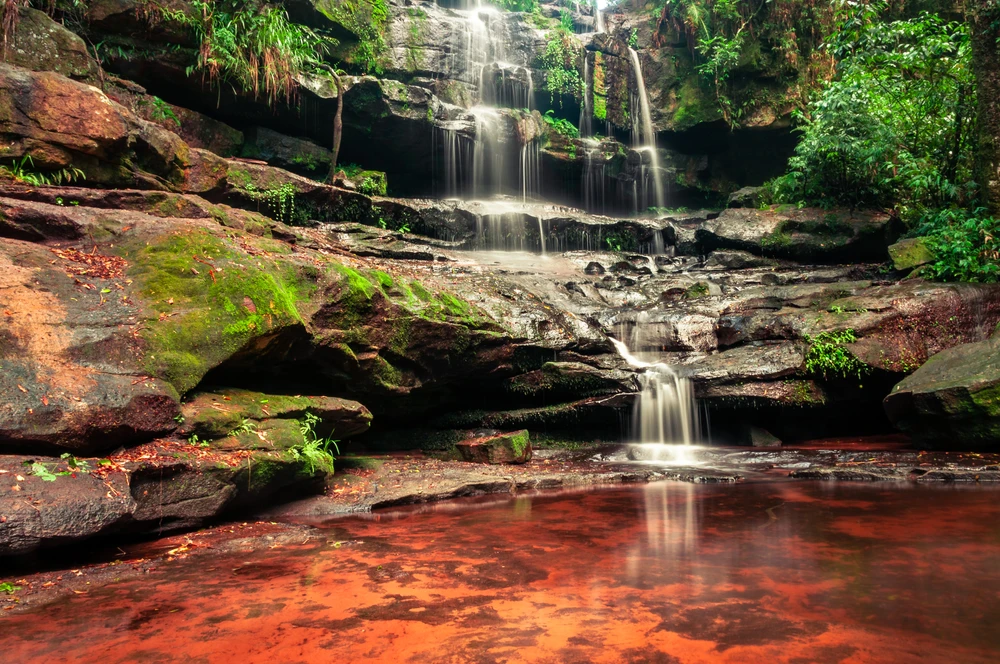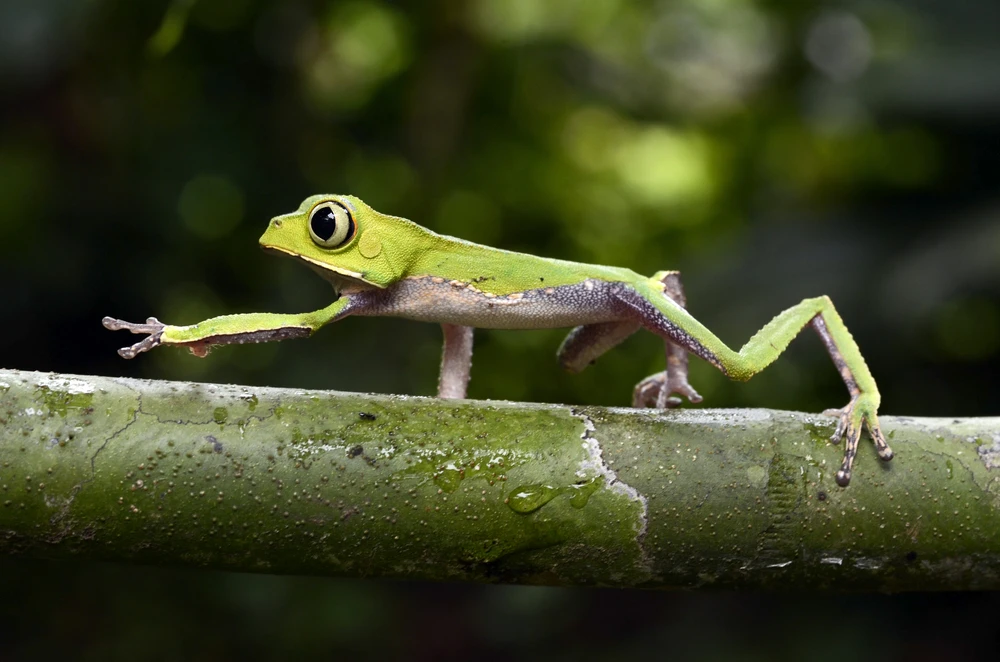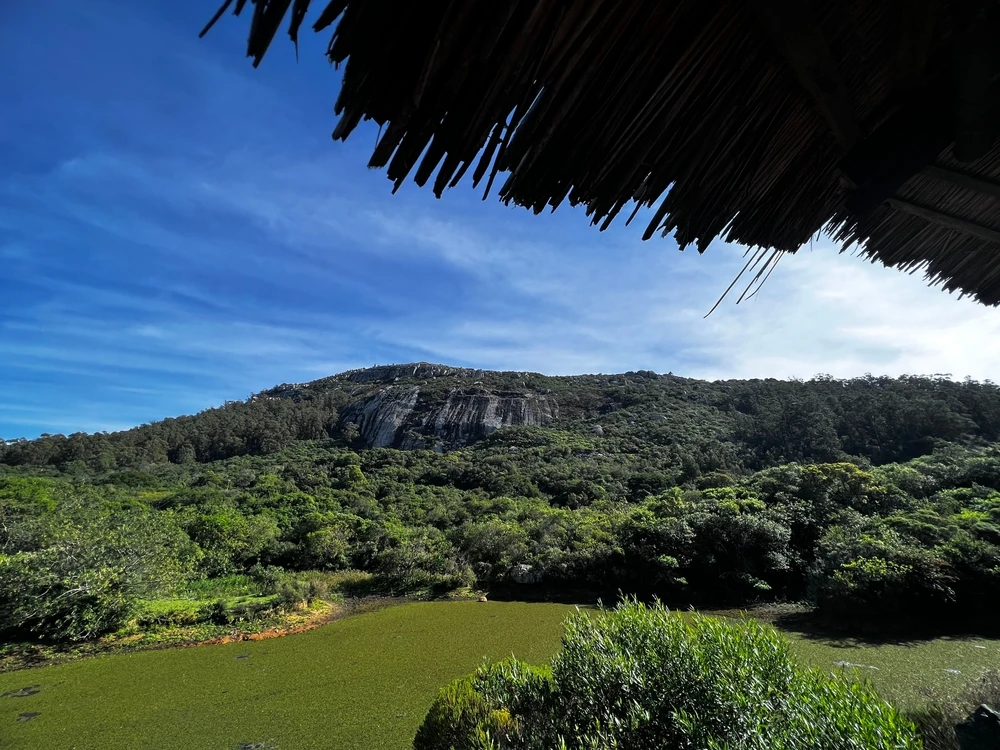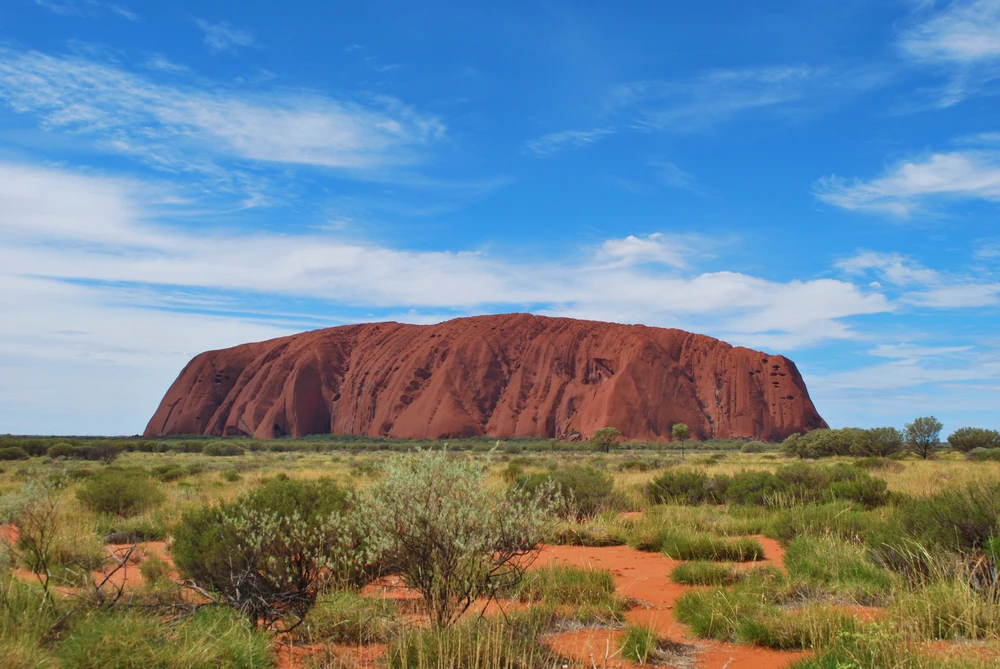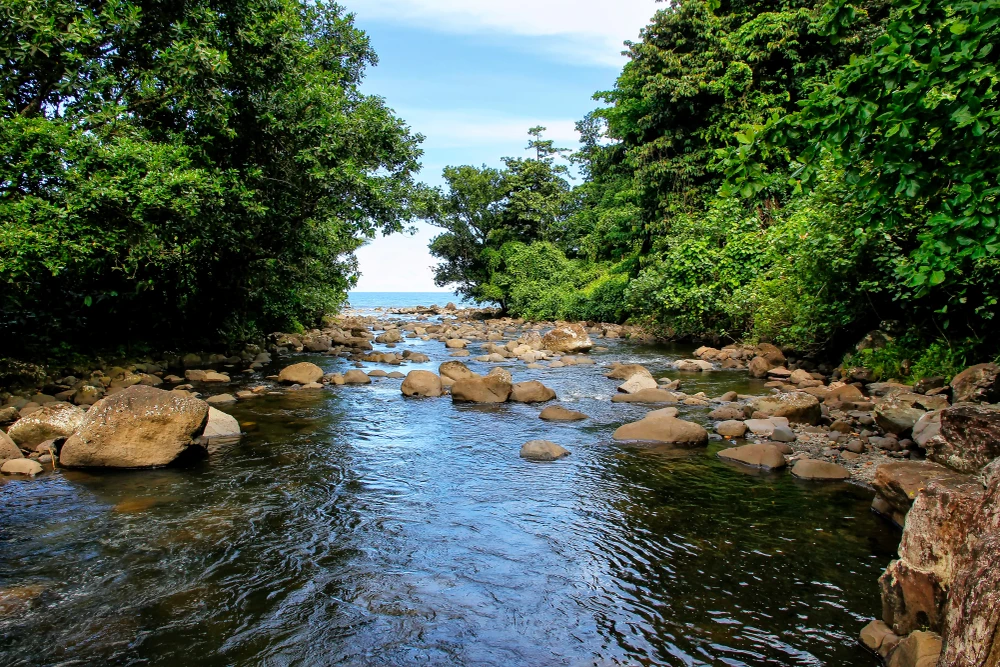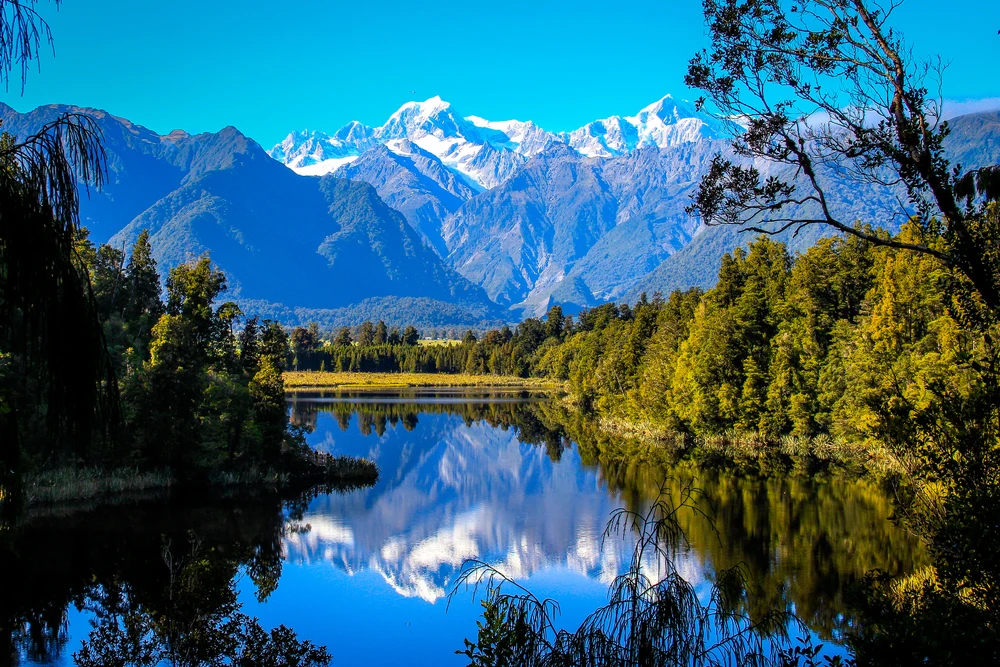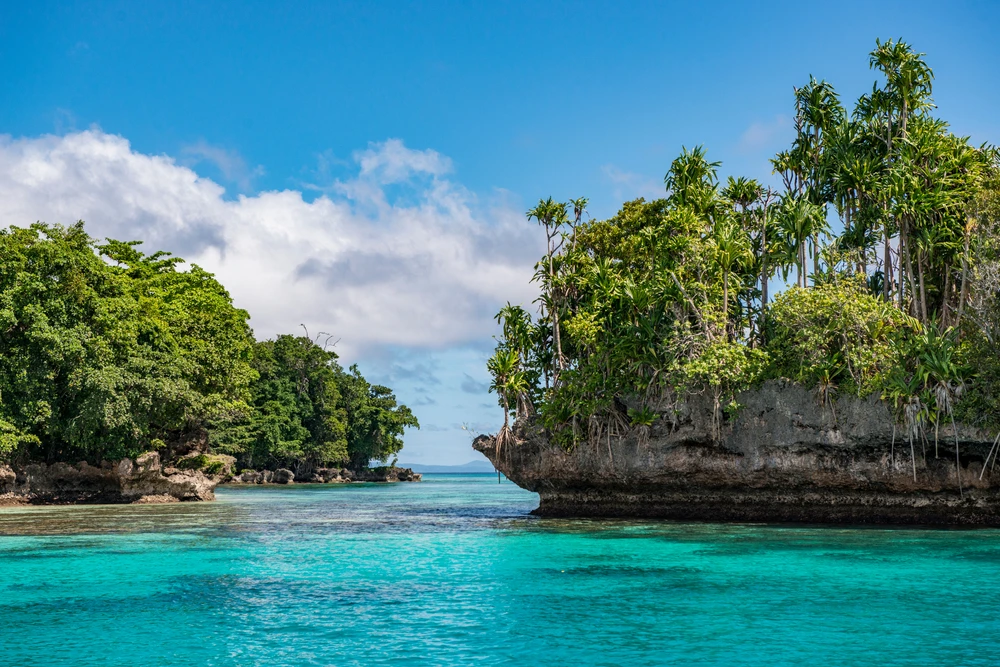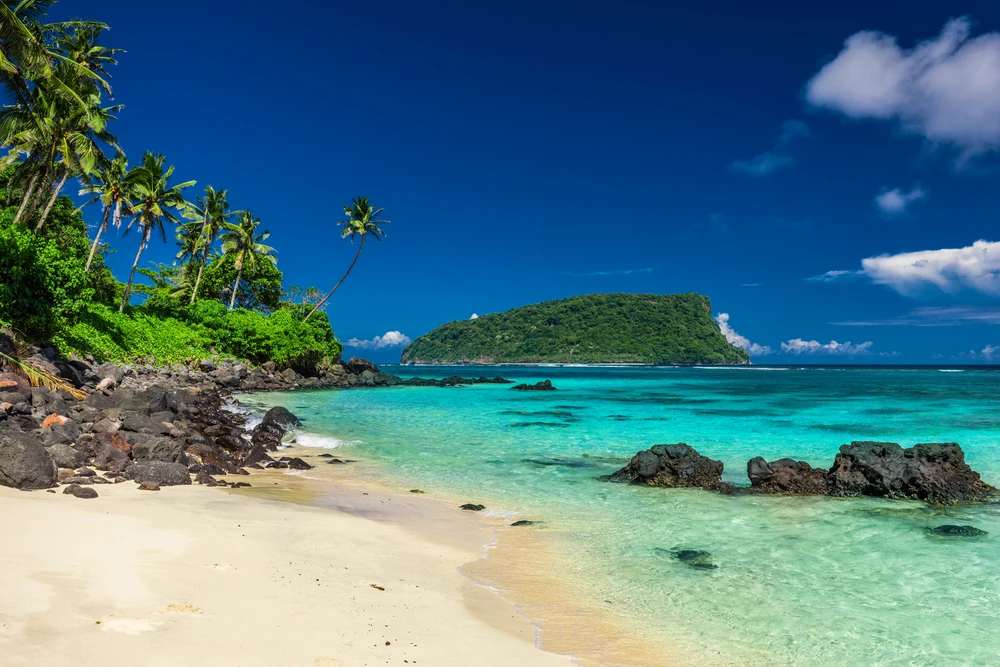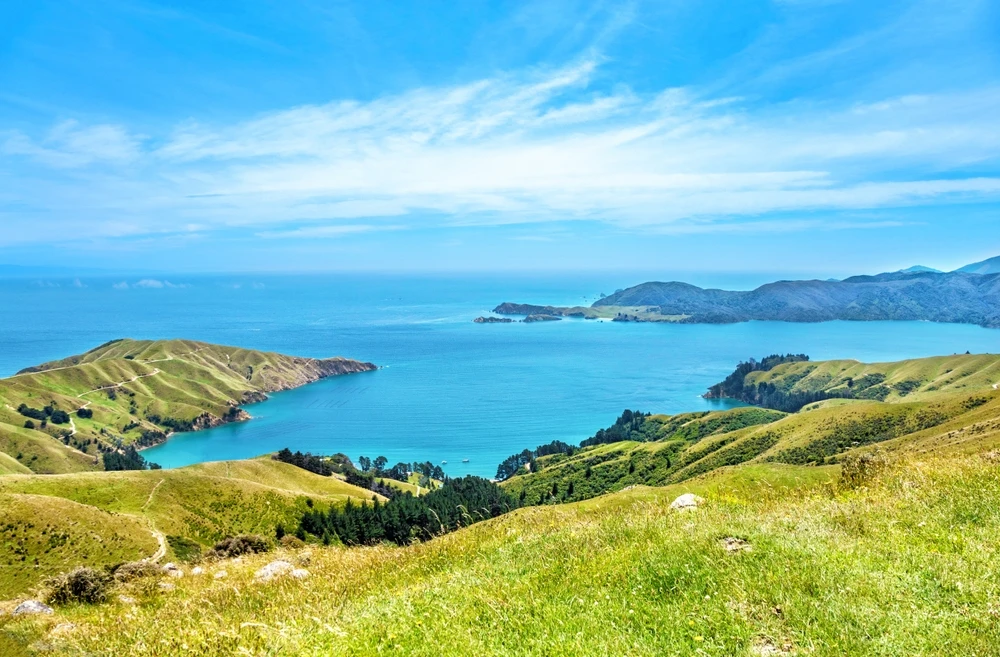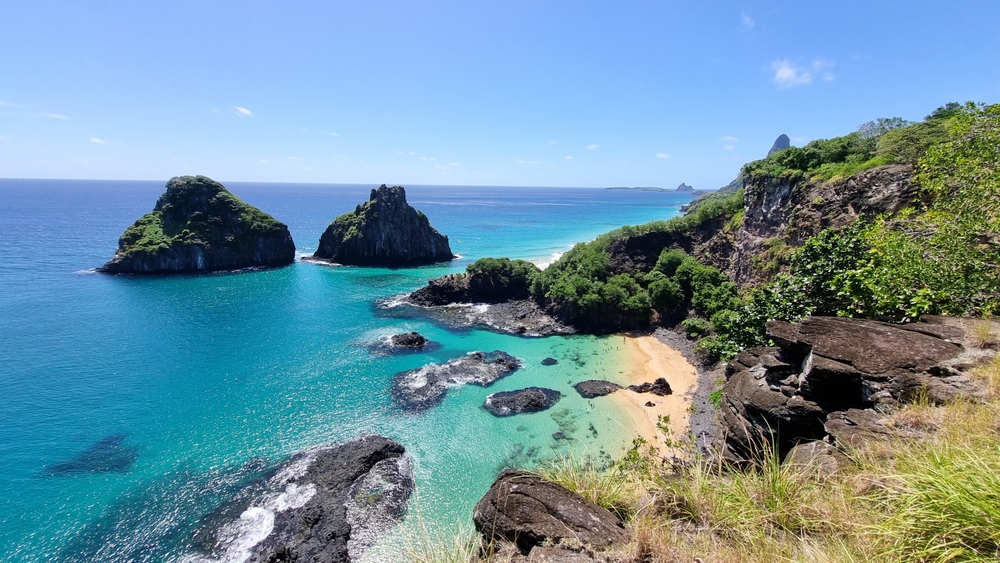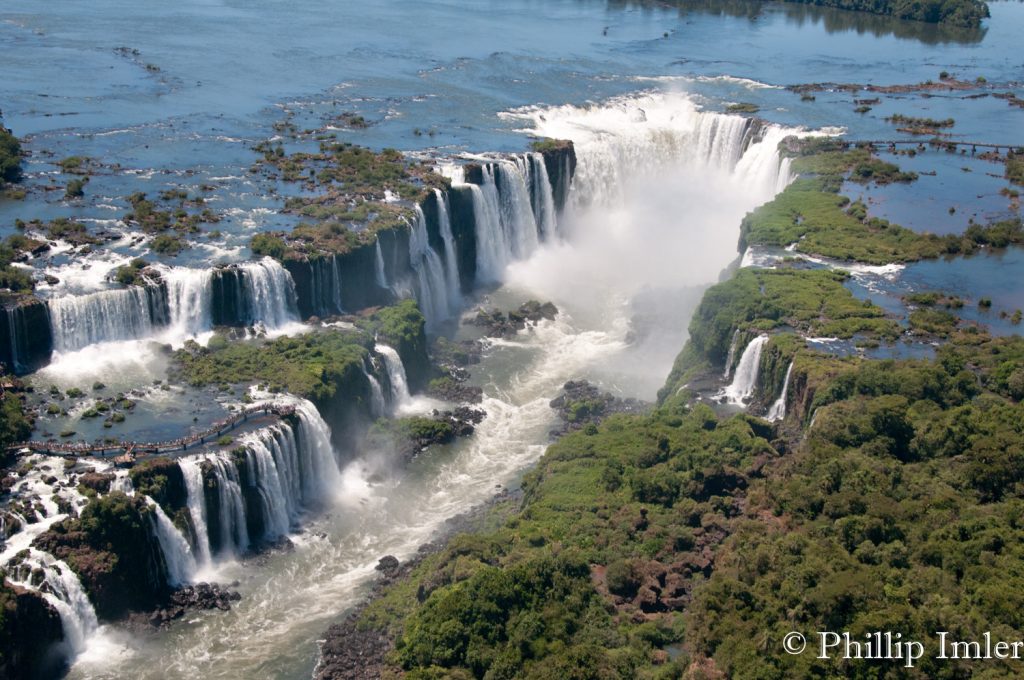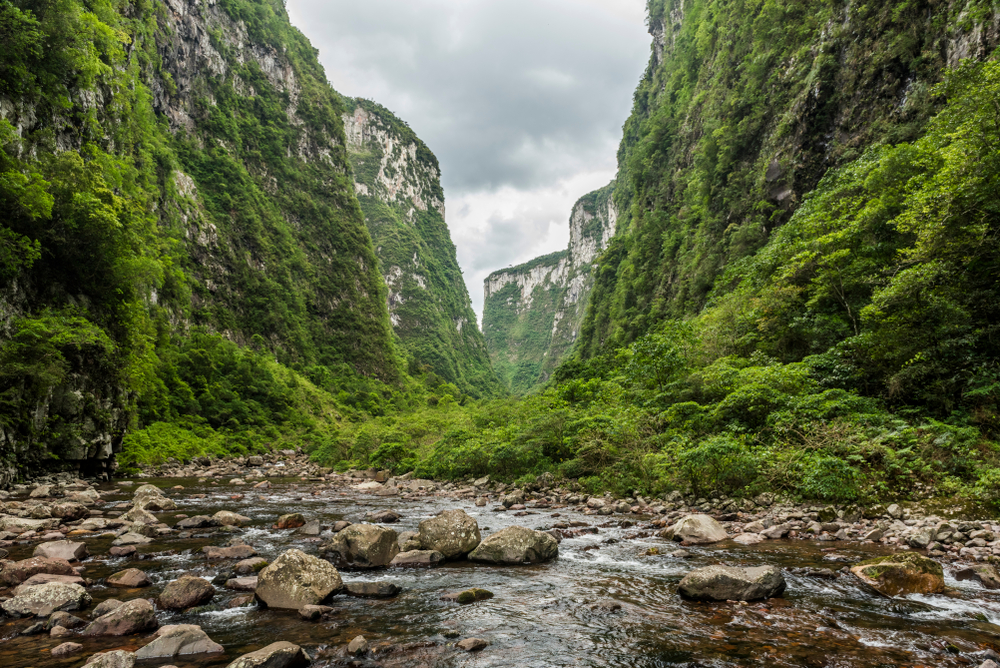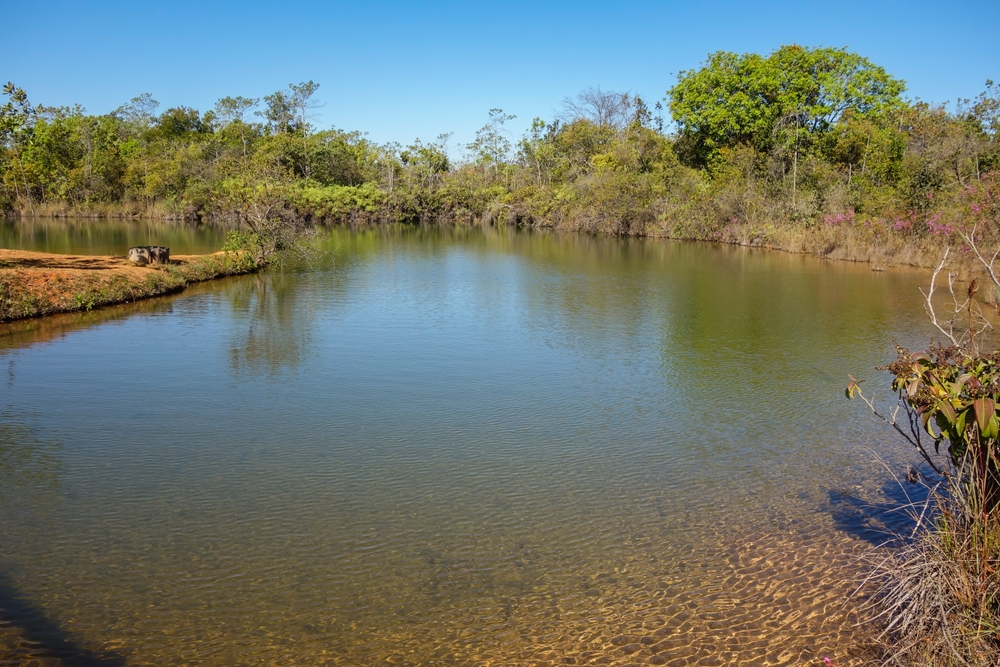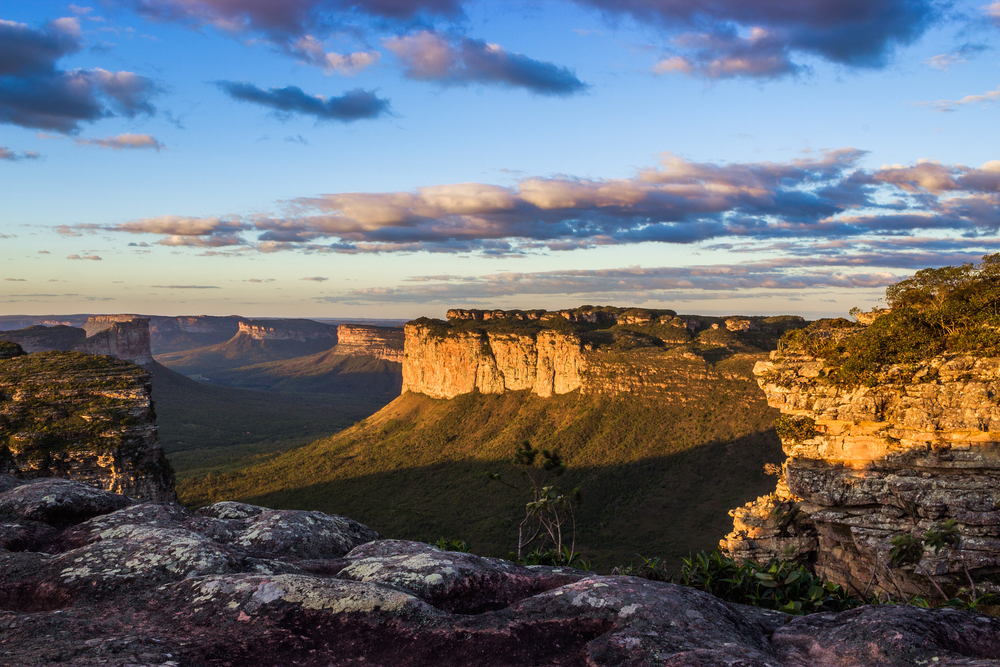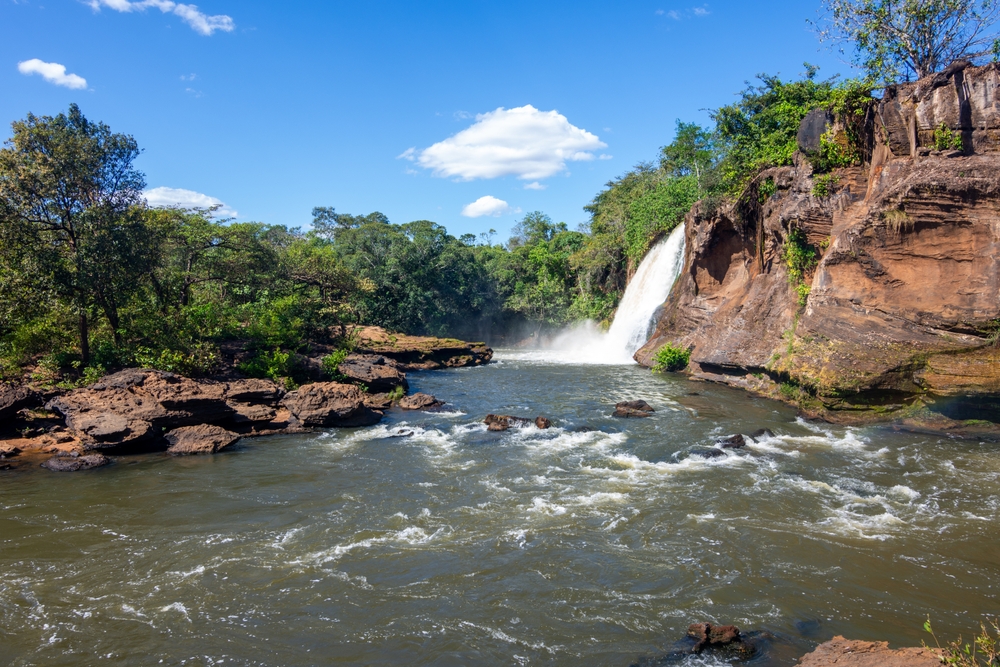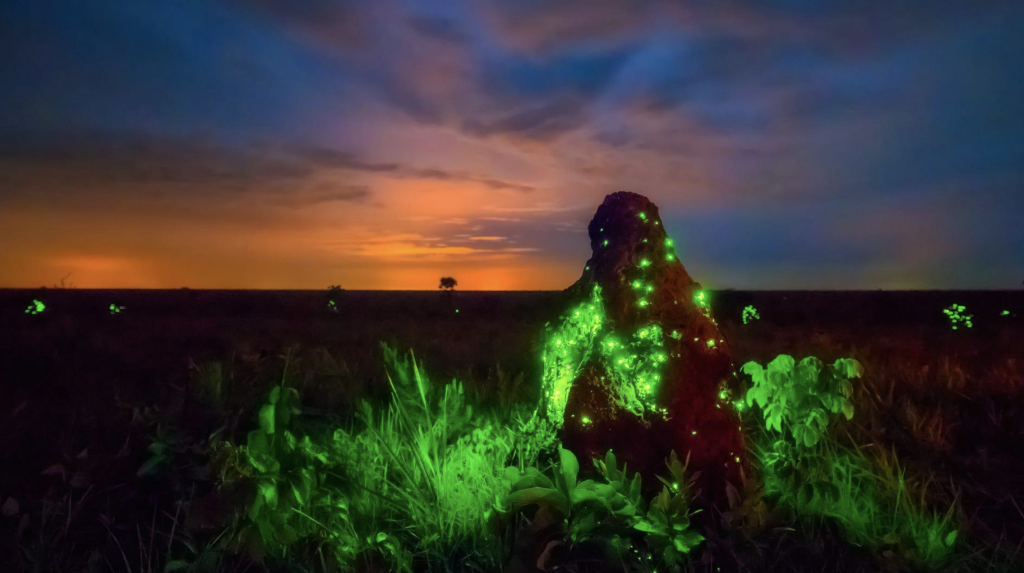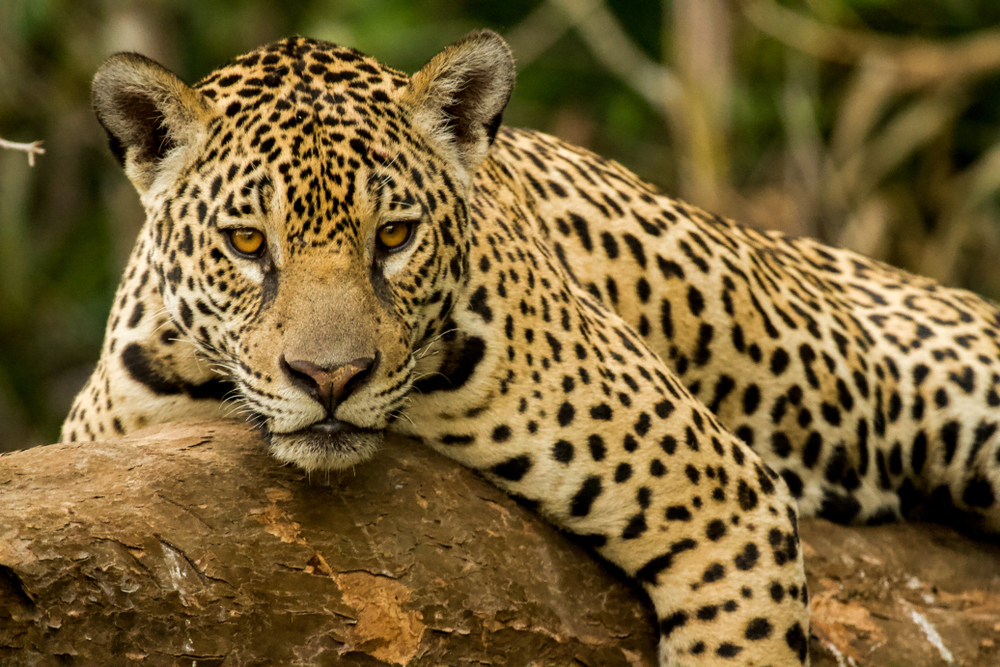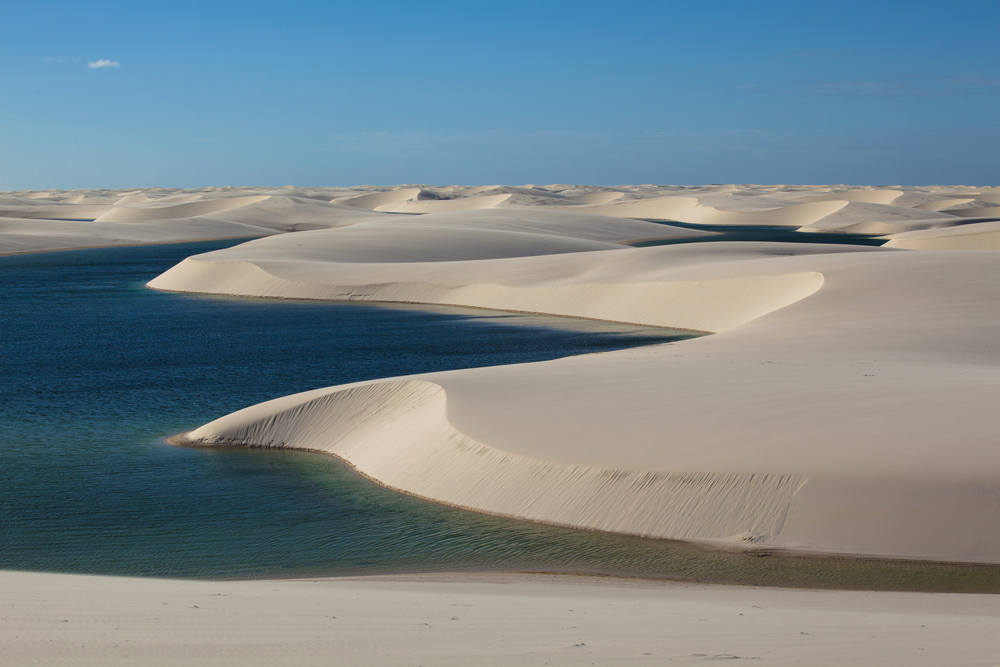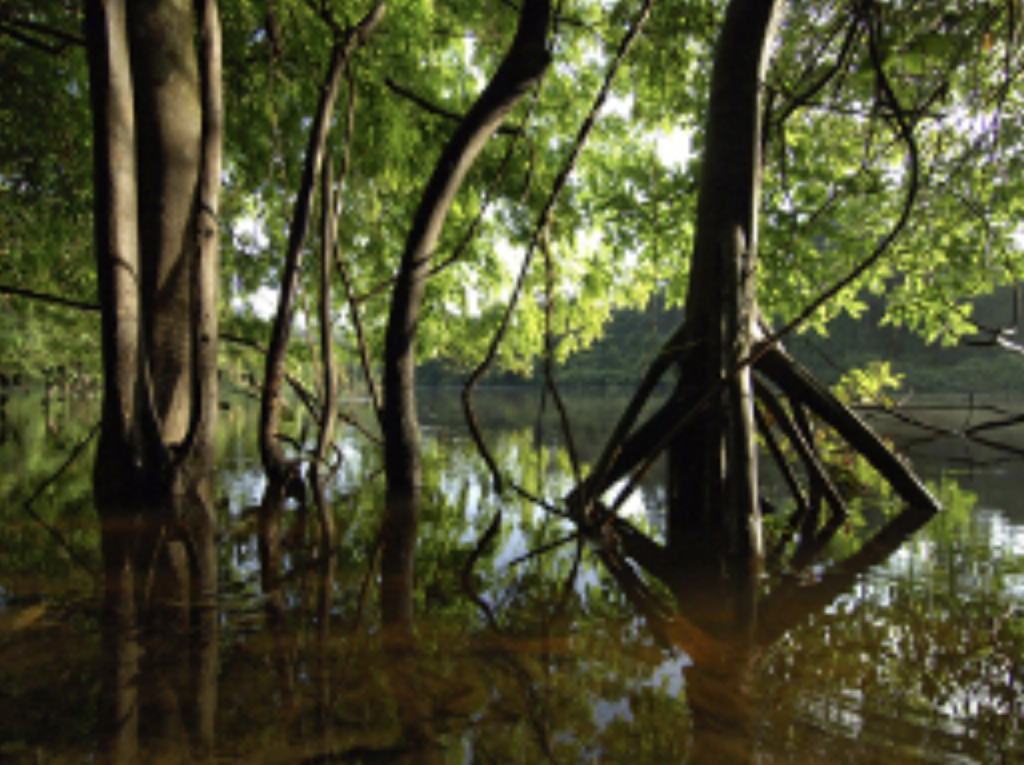Fernando de Noronha Marine Overview
Fernando de Noronha Marine National Park, known locally as Parque Nacional Marinho de Fernando de Noronha, is a stunning protected area in Brazil, covering approximately 42 square miles (109 square kilometers).
Located in the Atlantic Ocean, about 220 miles (354 kilometers) off the coast of Brazil, this UNESCO World Heritage Site encompasses most of the Fernando de Noronha archipelago, a volcanic island chain known for its extraordinary marine biodiversity and pristine beaches. The park consists of the main island, Fernando de Noronha, along with smaller islands and islets, all formed by ancient volcanic activity.
Towering cliffs, rugged coastlines, and white sandy beaches characterize the terrain, while lush tropical vegetation, including sea grape trees, coastal shrubs, and native orchids, thrives in the more sheltered areas. The park’s turquoise waters contrast with the dark volcanic rock formations, and its highest point, Morro do Pico, rises 1,060 feet (323 meters) above sea level, offering panoramic views of the island.
Fernando de Noronha is a haven for marine life, making it one of the most ecologically significant sites in Brazil. The surrounding waters teem with diverse species, including spinner dolphins, green sea turtles, and reef sharks. The park’s coral reefs and rocky seabeds provide shelter for a rich variety of tropical fish, such as parrotfish, angelfish, and groupers.
The island is also home to large seabird colonies, including the magnificent frigatebird and red-footed booby, which nest on the steep cliffs and rocky outcroppings. Endemic species, such as the Noronha skink and Noronha rat, add to the island’s unique biodiversity, highlighting its ecological importance. The marine environment is particularly famous for its resident pods of spinner dolphins, which can often be seen performing aerial acrobatics in the crystal-clear waters.
Visitors to the park are drawn to its breathtaking natural beauty and its reputation as one of the best diving and snorkeling destinations in the world. Baía do Sancho, frequently ranked among the most beautiful beaches globally, is a top attraction with its golden sand and vibrant underwater life.
At Baía dos Porcos, visitors can explore tide pools and admire striking rock formations, while Praia do Leão is a crucial nesting site for sea turtles. The waters around the park offer exceptional diving opportunities, with sites such as Pedras Secas and Buraco do Inferno featuring dramatic underwater caves, swim-throughs, and coral-covered walls teeming with marine life.
Boat tours, kayaking, and stand-up paddleboarding allow visitors to experience the park’s seascape from the surface, while scenic hikes lead to stunning viewpoints like Mirante dos Golfinhos, where dolphins can be observed in their natural habitat.
Strict conservation measures are in place to protect the delicate ecosystem of Fernando de Noronha Marine National Park. Visitor numbers are limited, and certain areas are off-limits to preserve nesting sites and sensitive habitats.
The park is managed by ICMBio, Brazil’s environmental agency, which enforces guidelines on sustainable tourism, marine conservation, and species protection. Efforts to restore native vegetation, monitor sea turtle populations, and reduce human impact have seen considerable success.
However, challenges such as plastic pollution, climate change, and the spread of invasive species continue to pose threats to the park’s biodiversity. Ongoing conservation programs and eco-friendly tourism initiatives play a crucial role in maintaining the pristine environment of this remarkable marine sanctuary.

